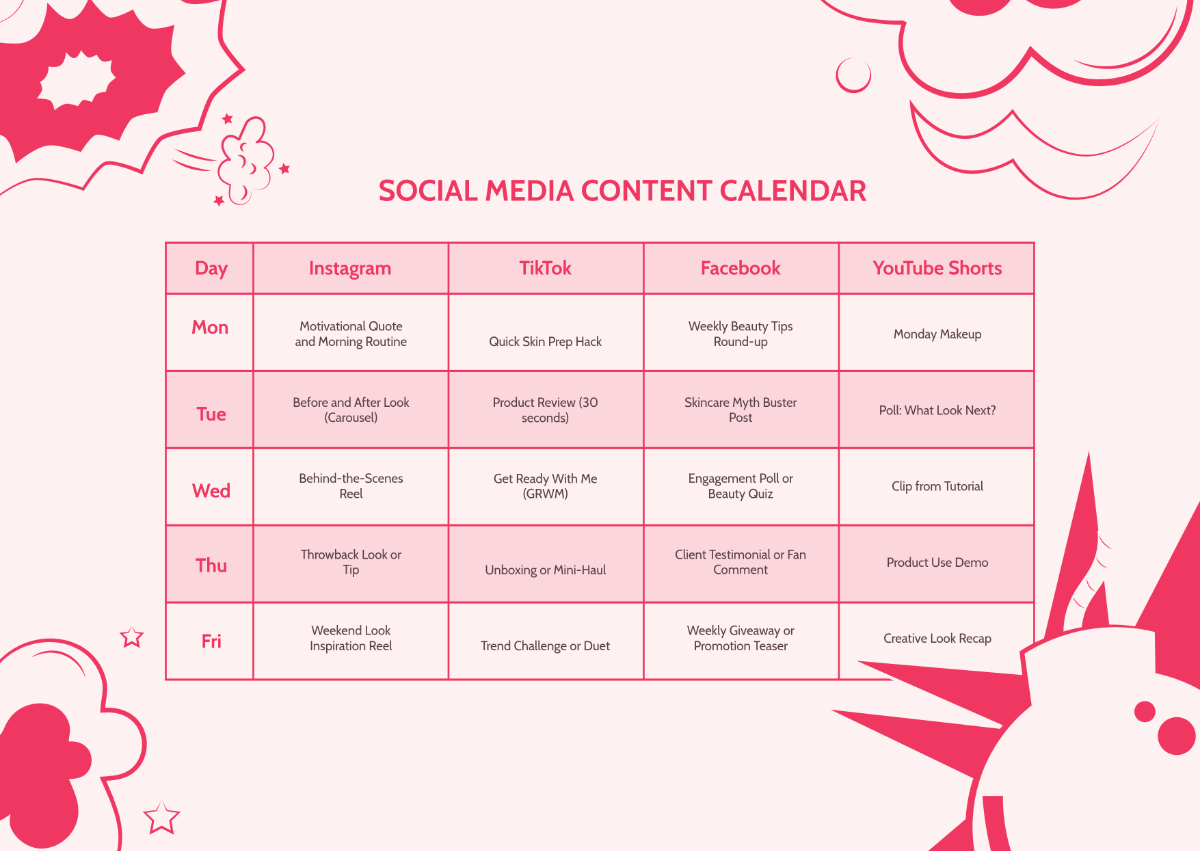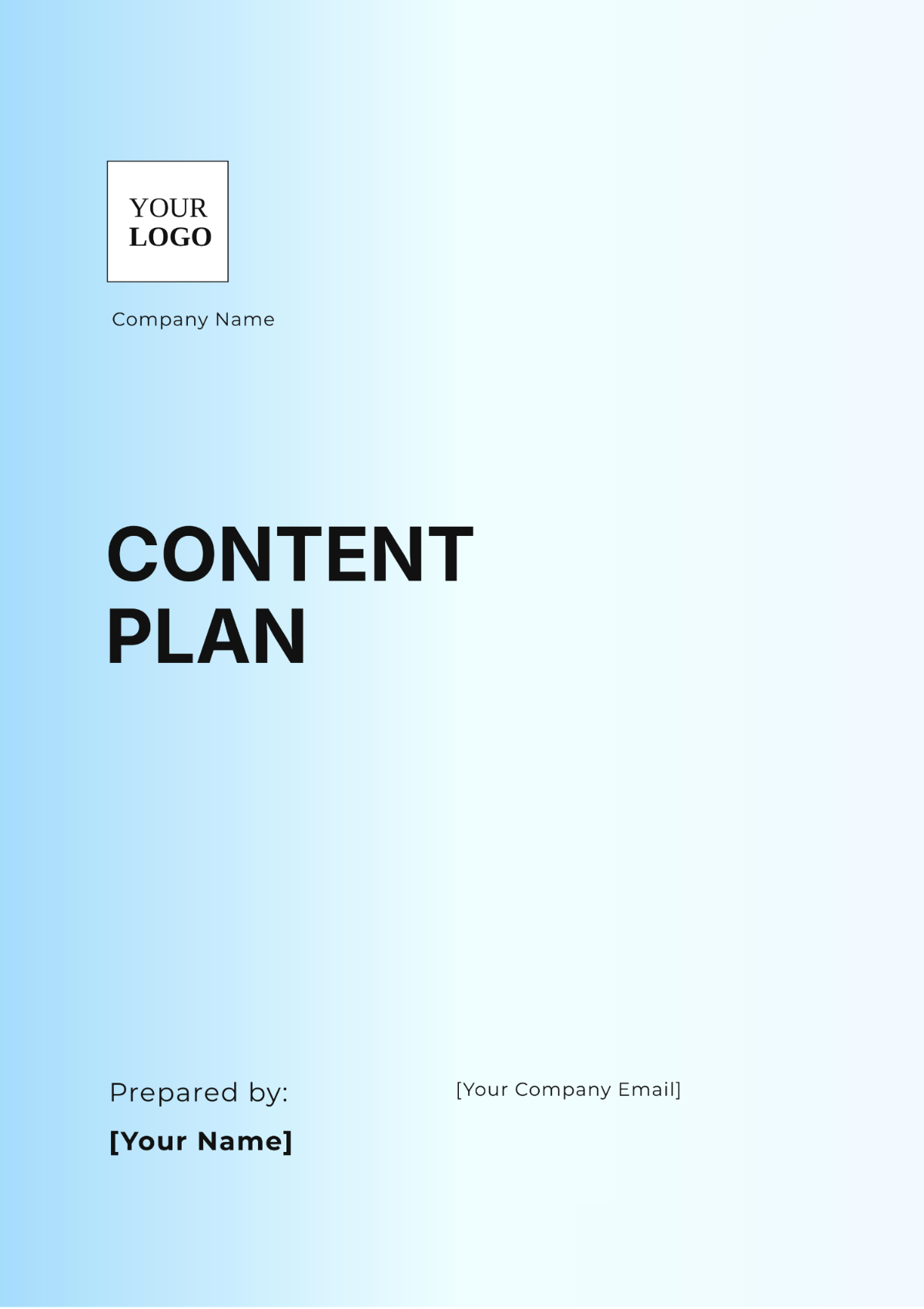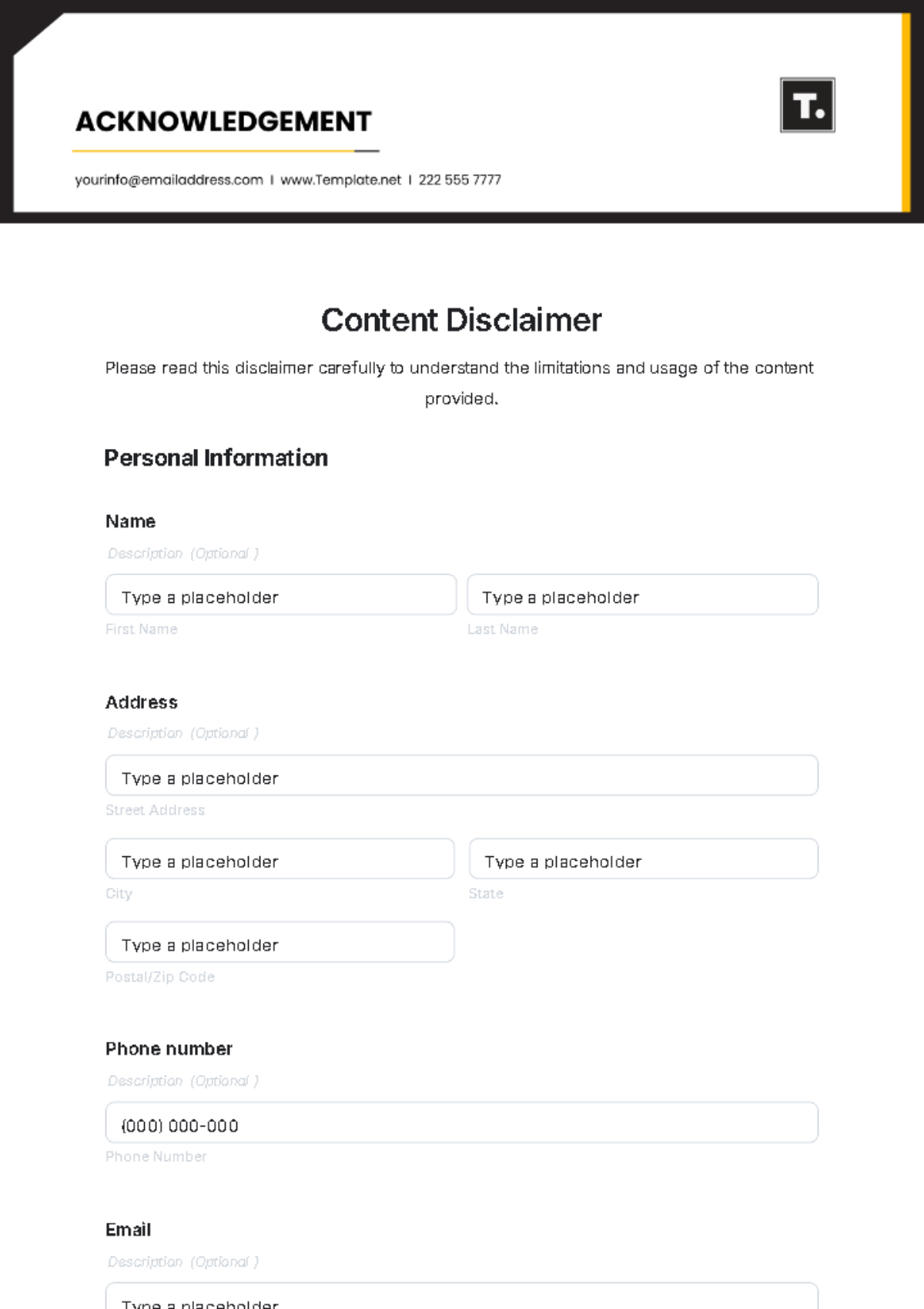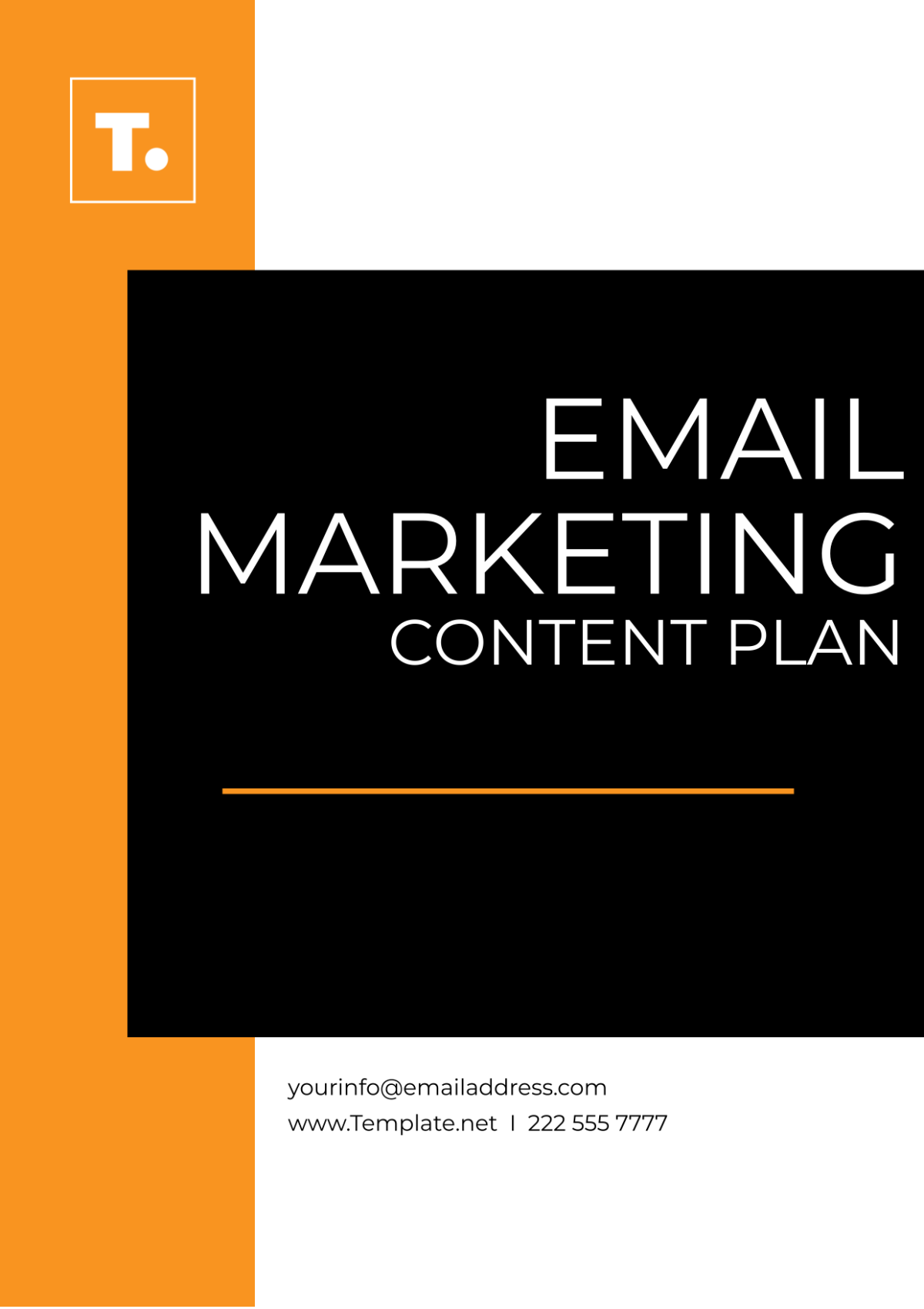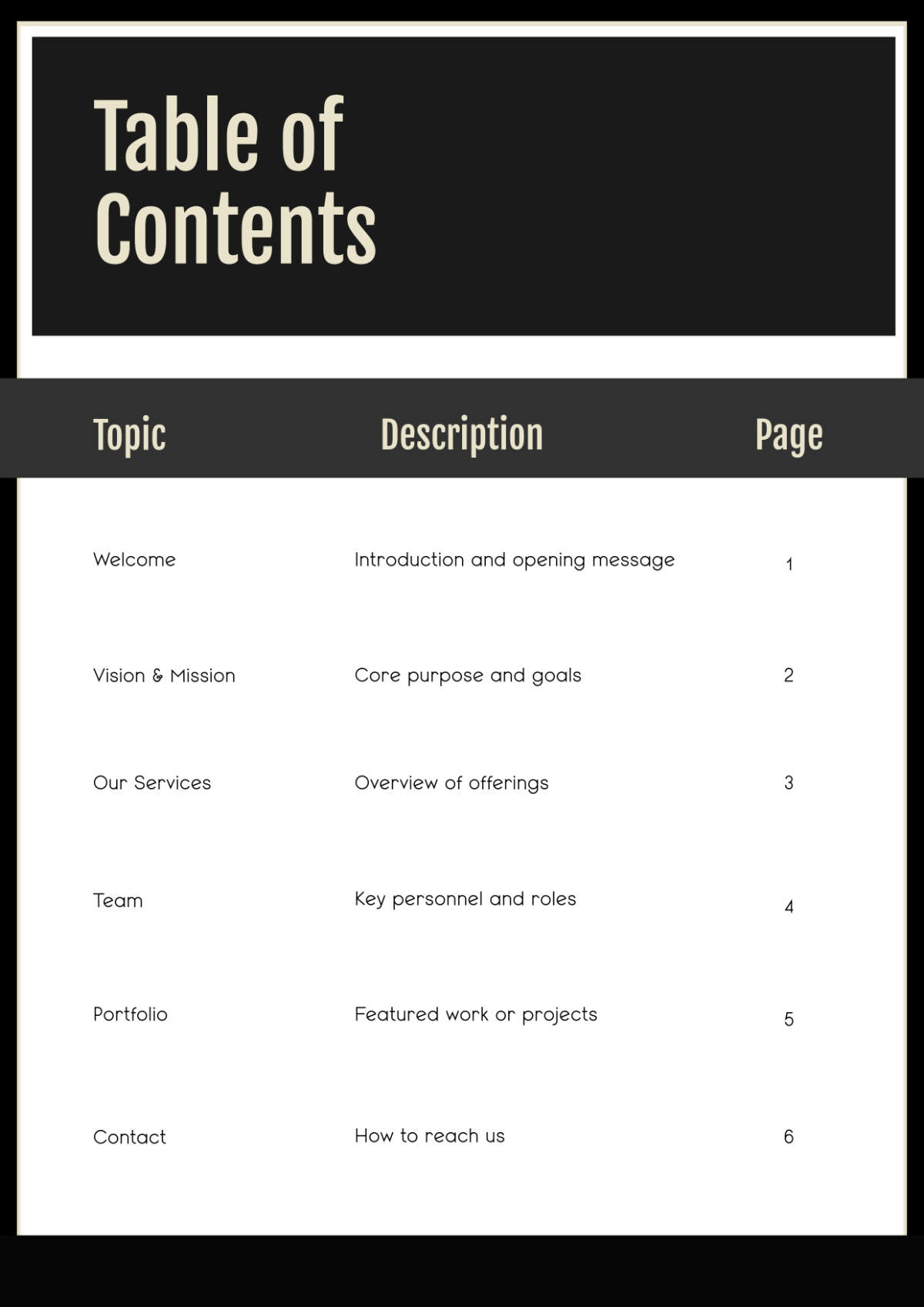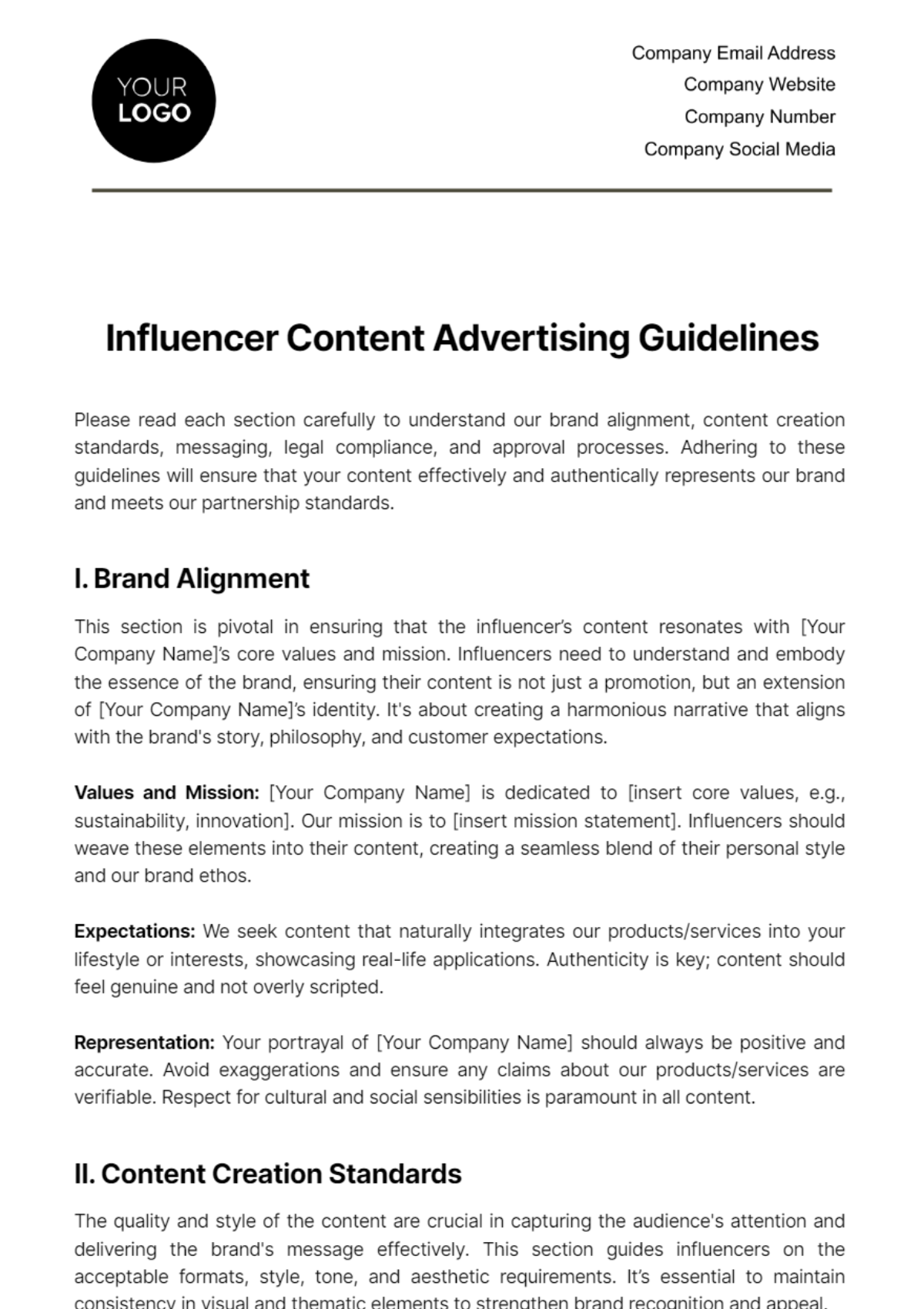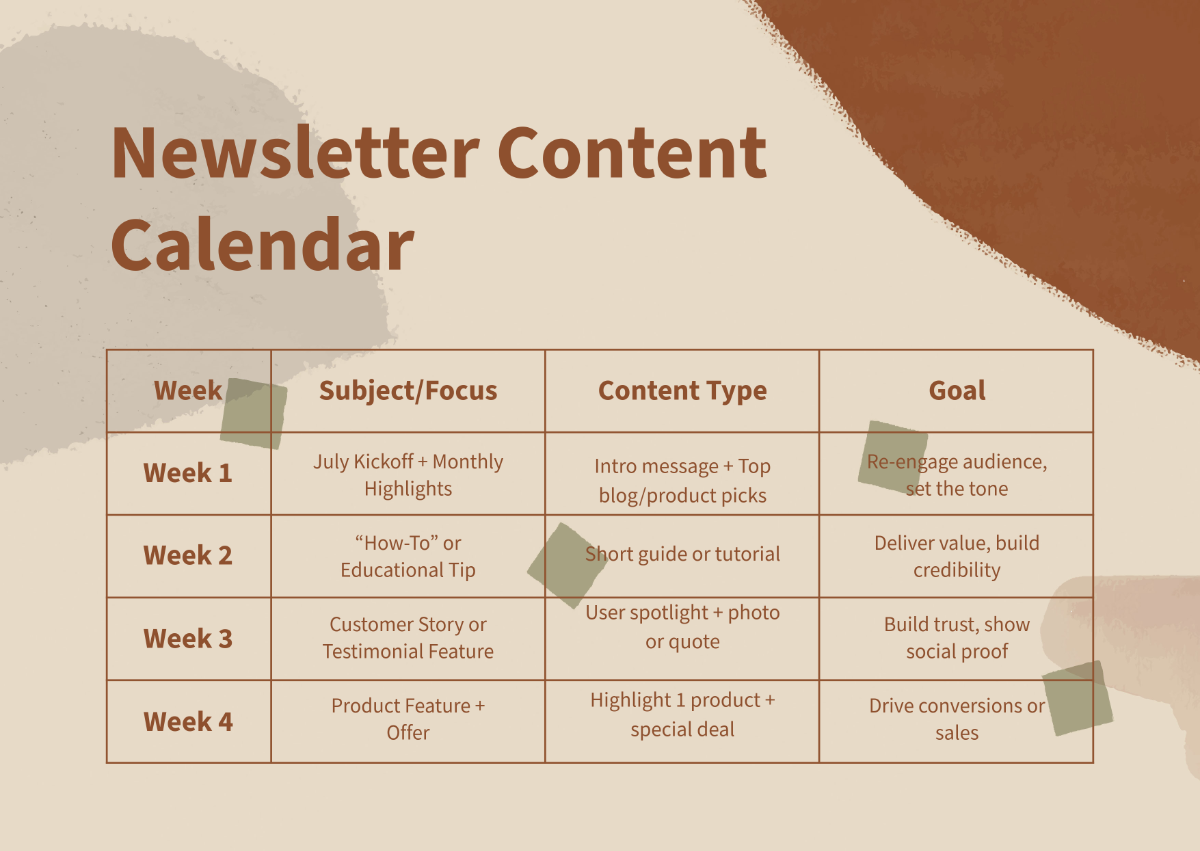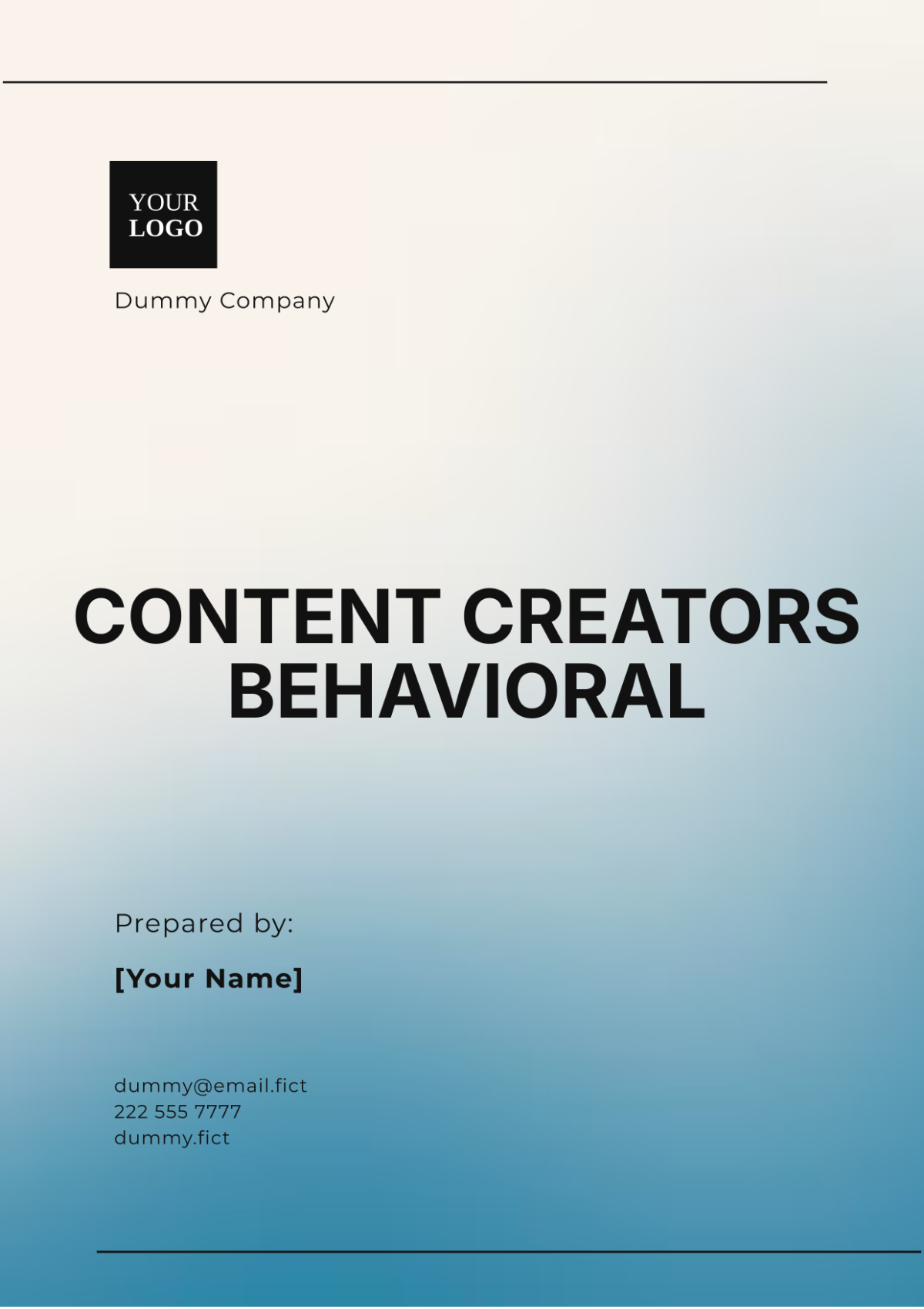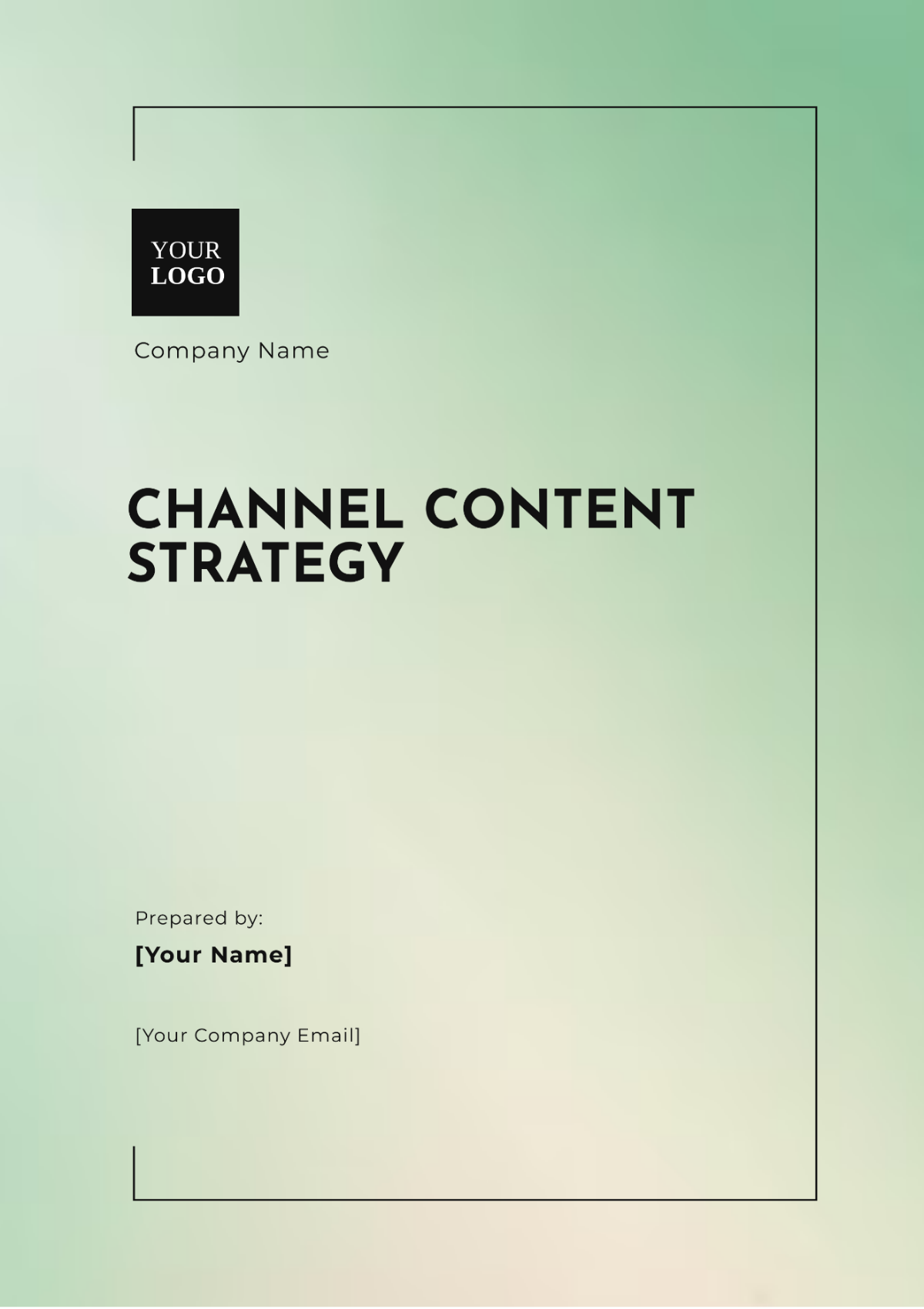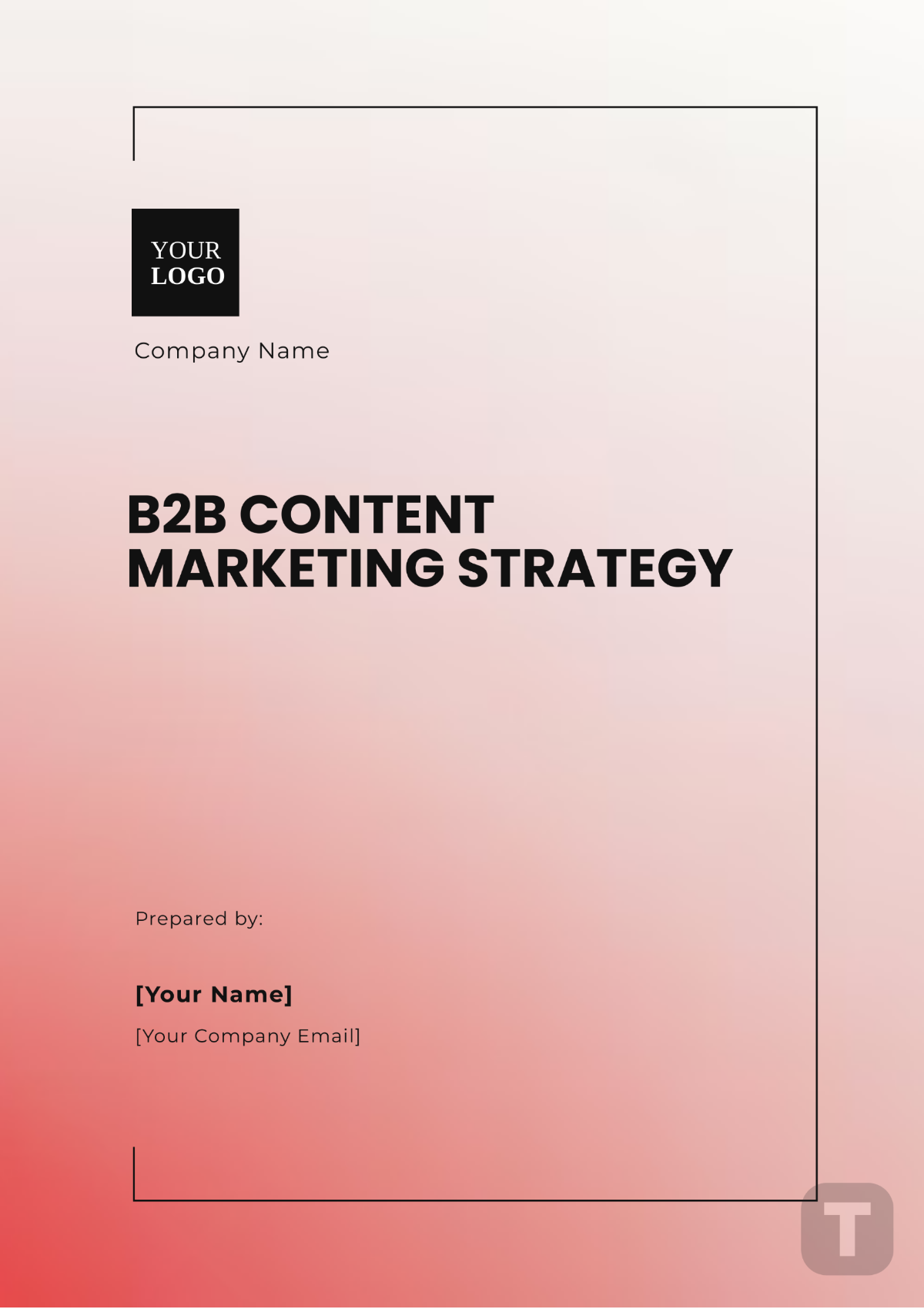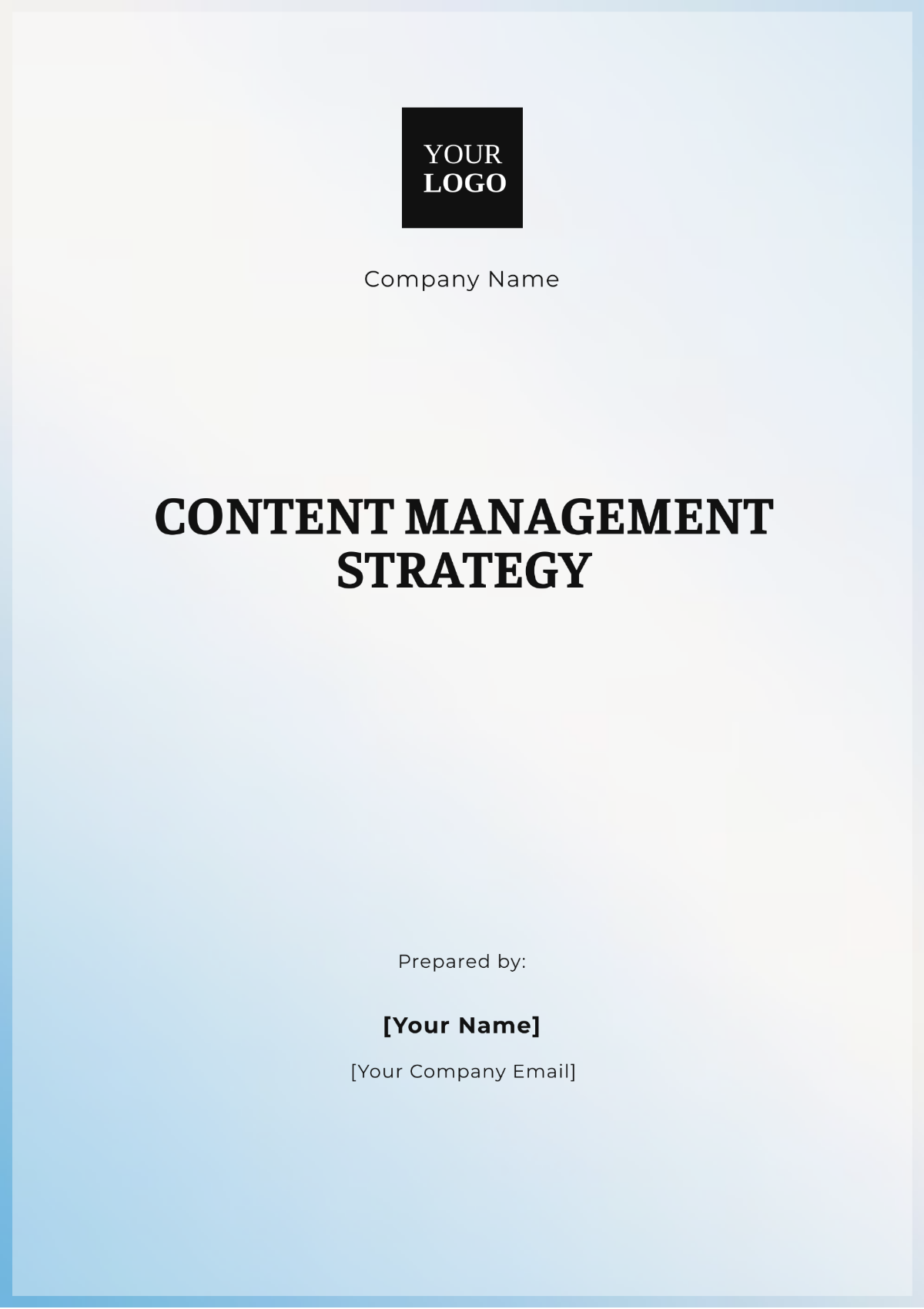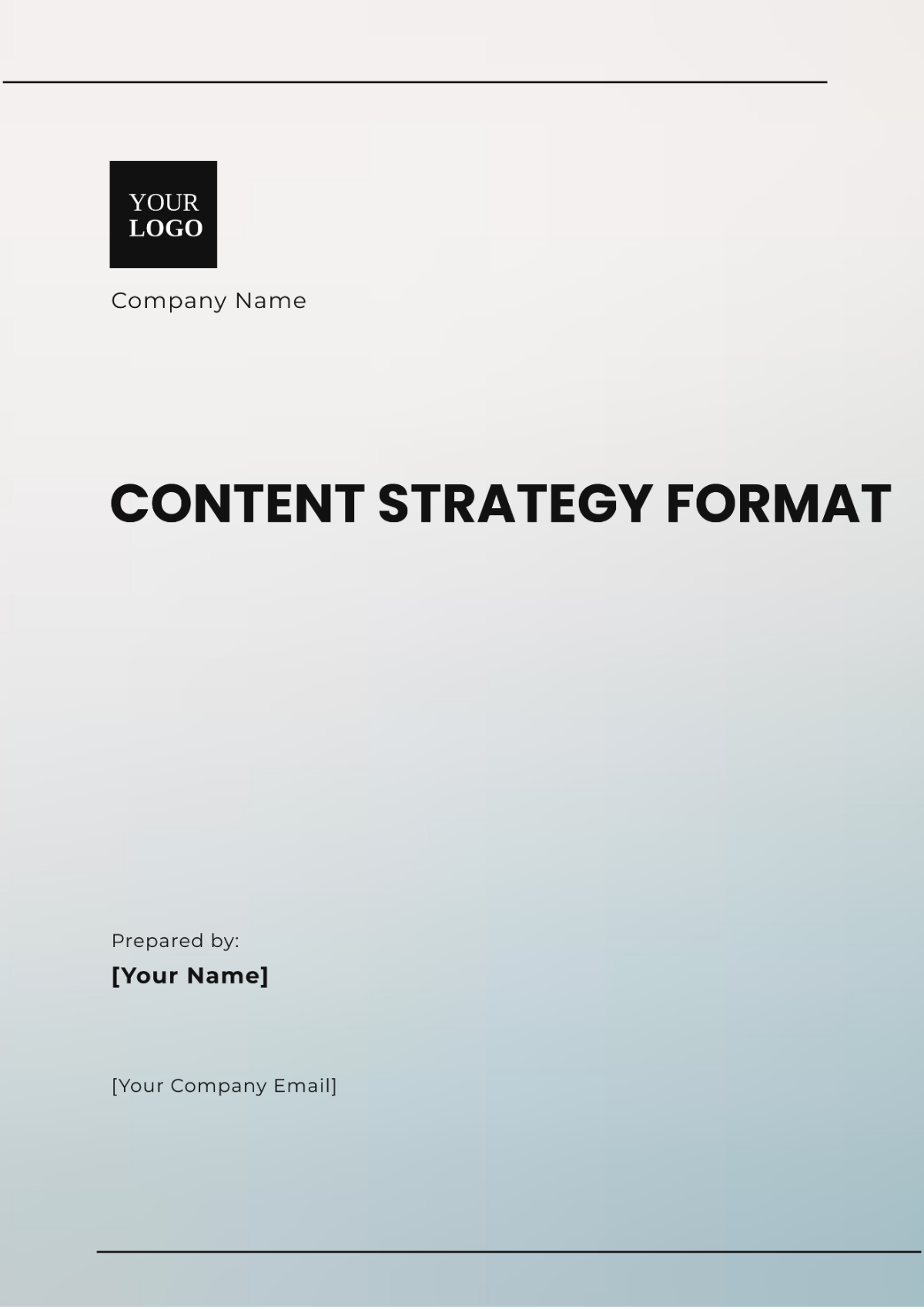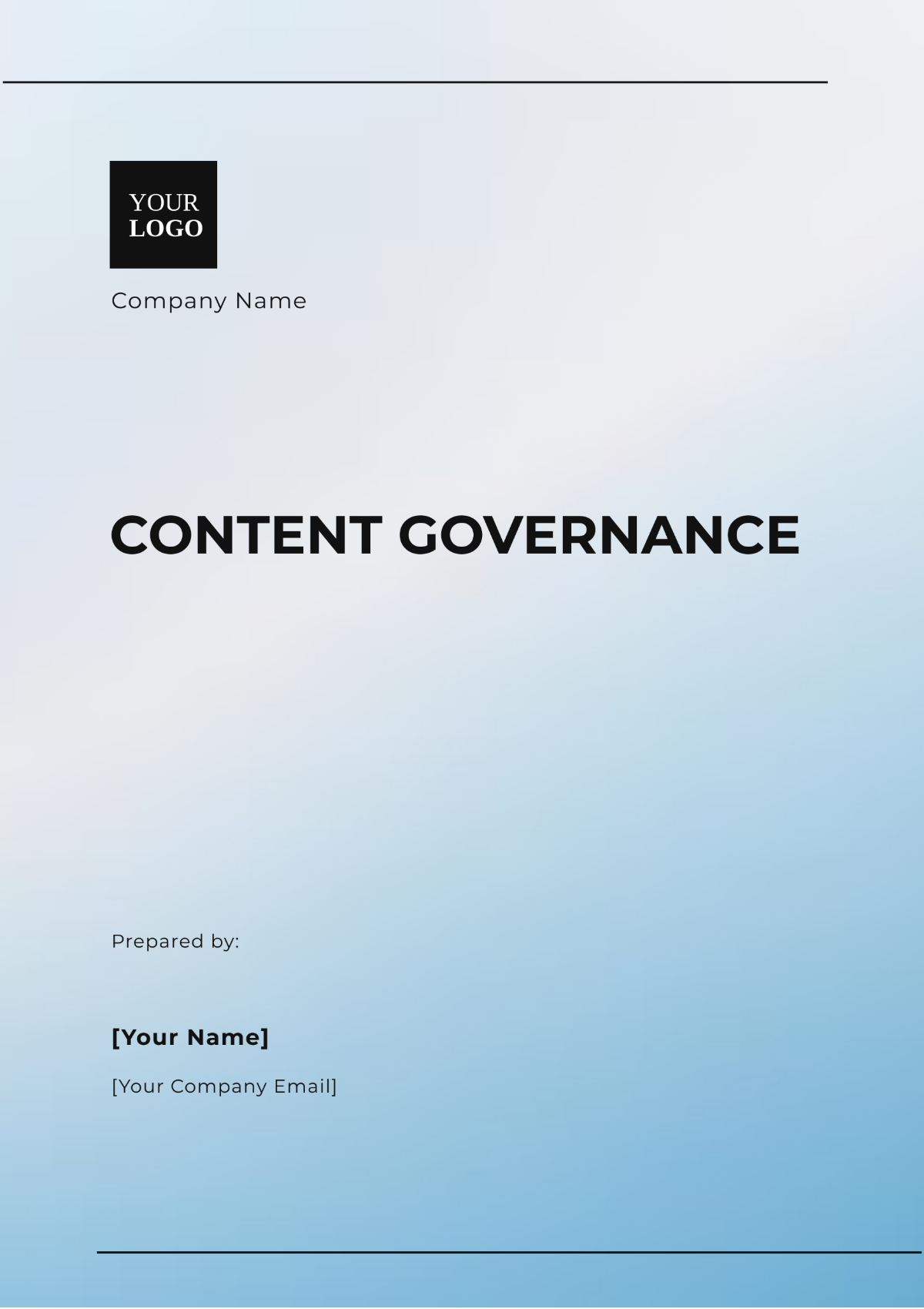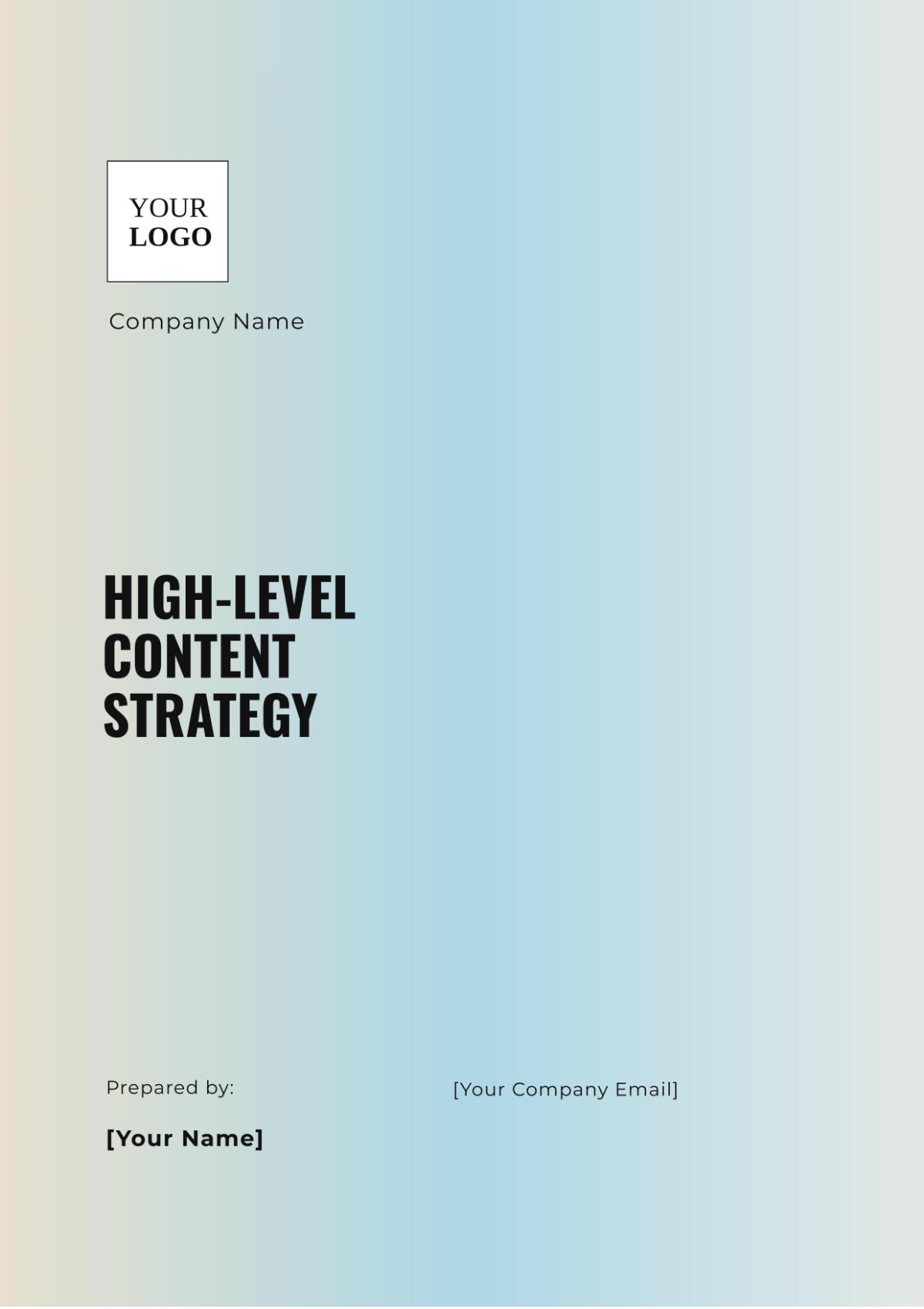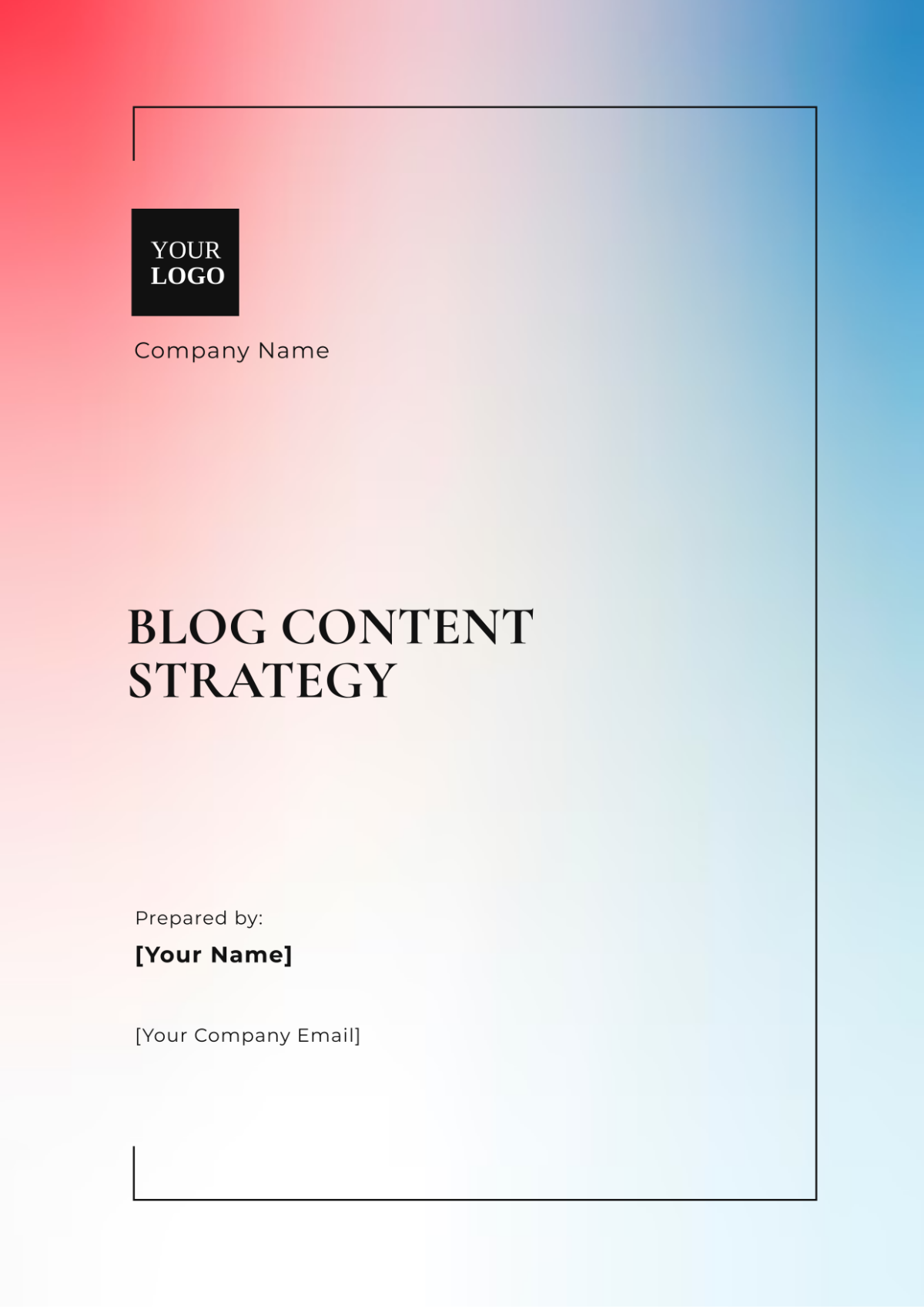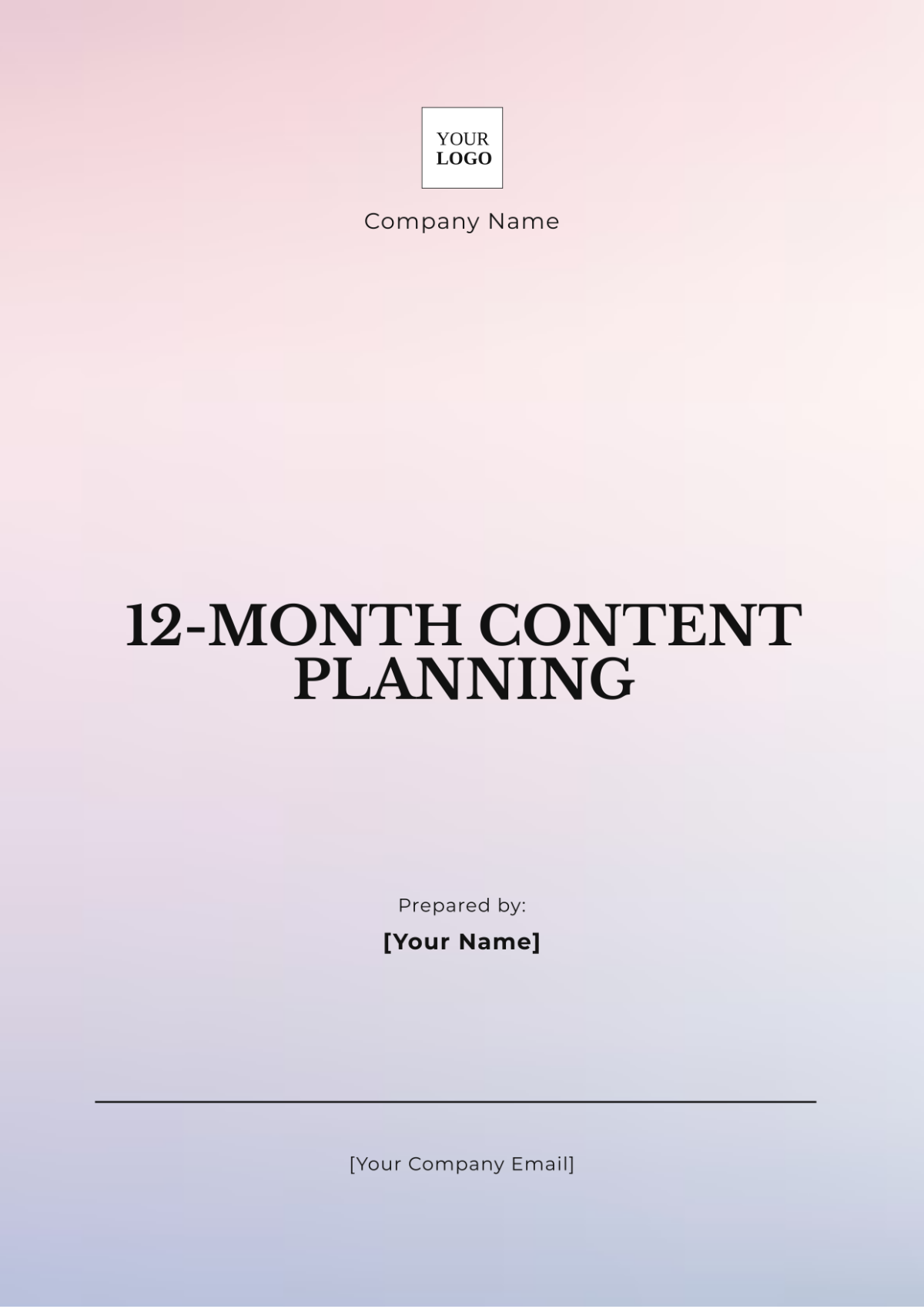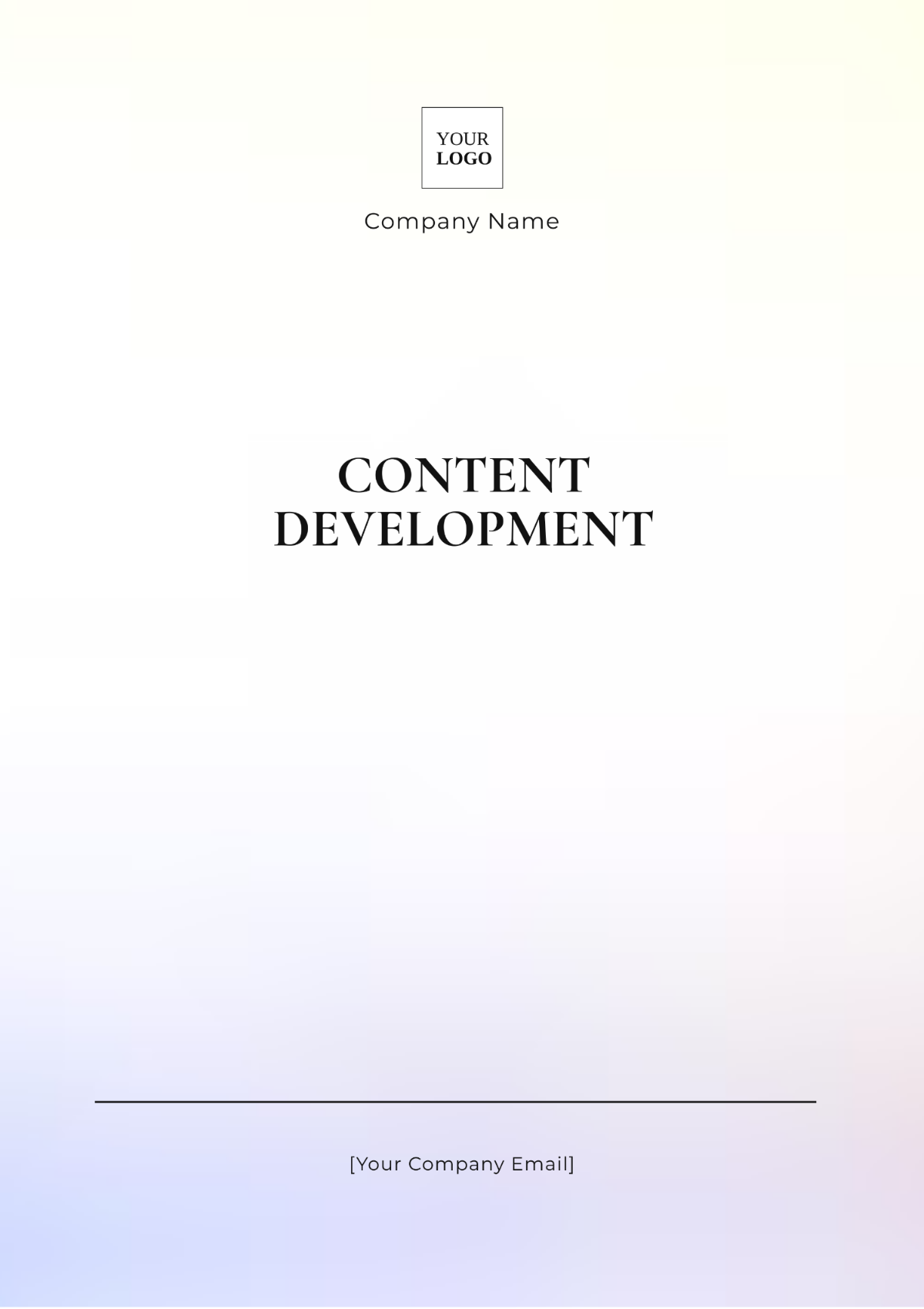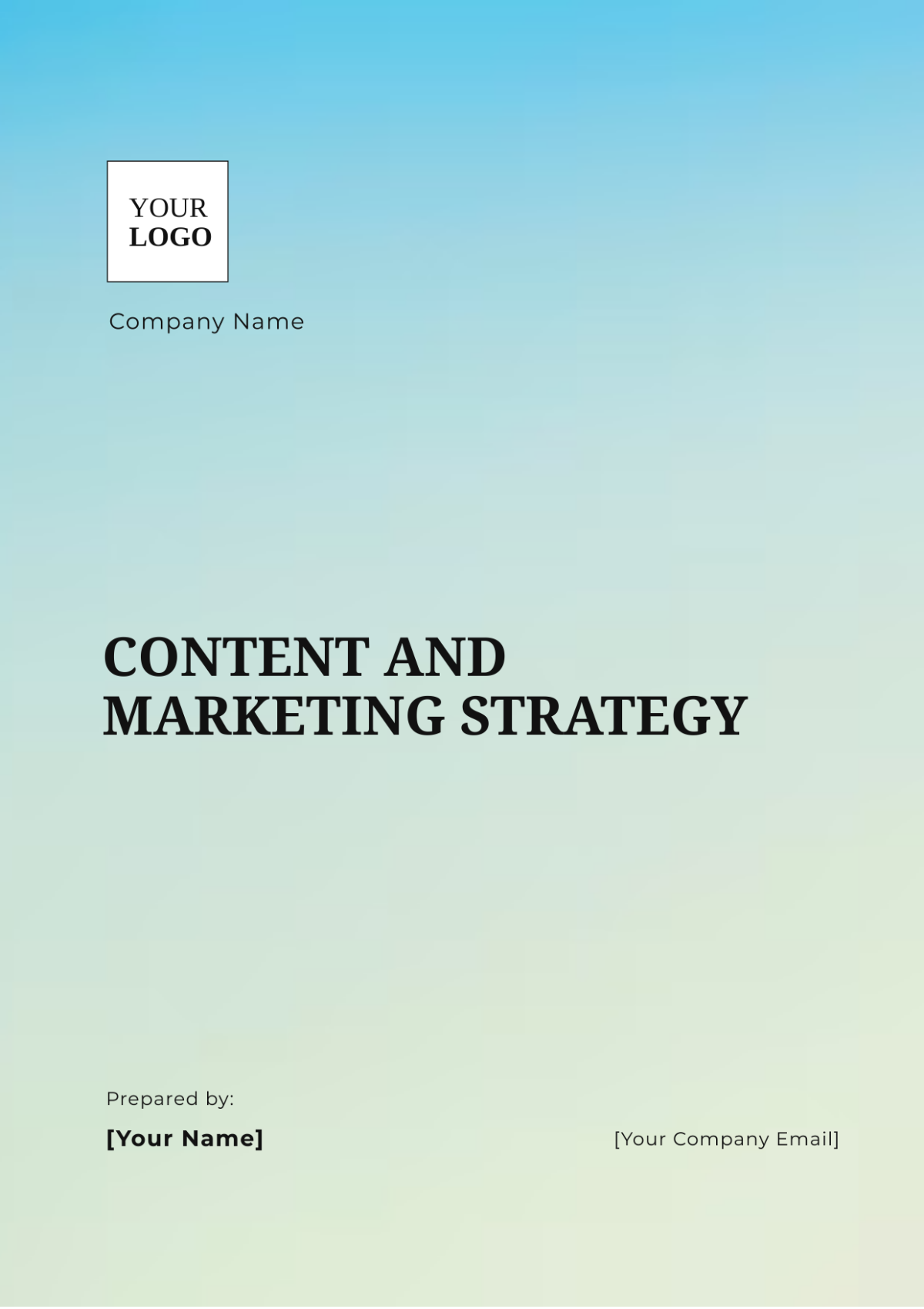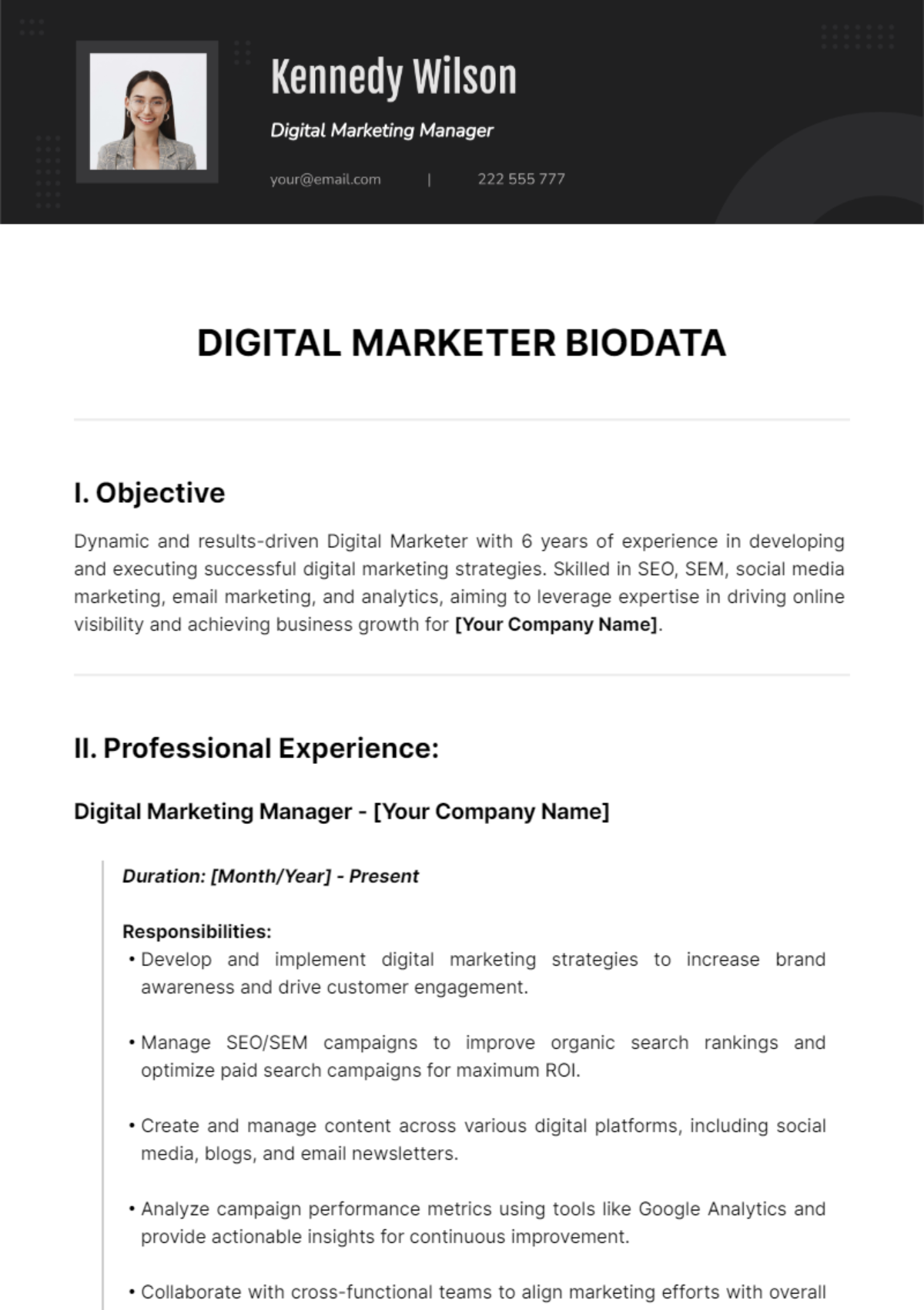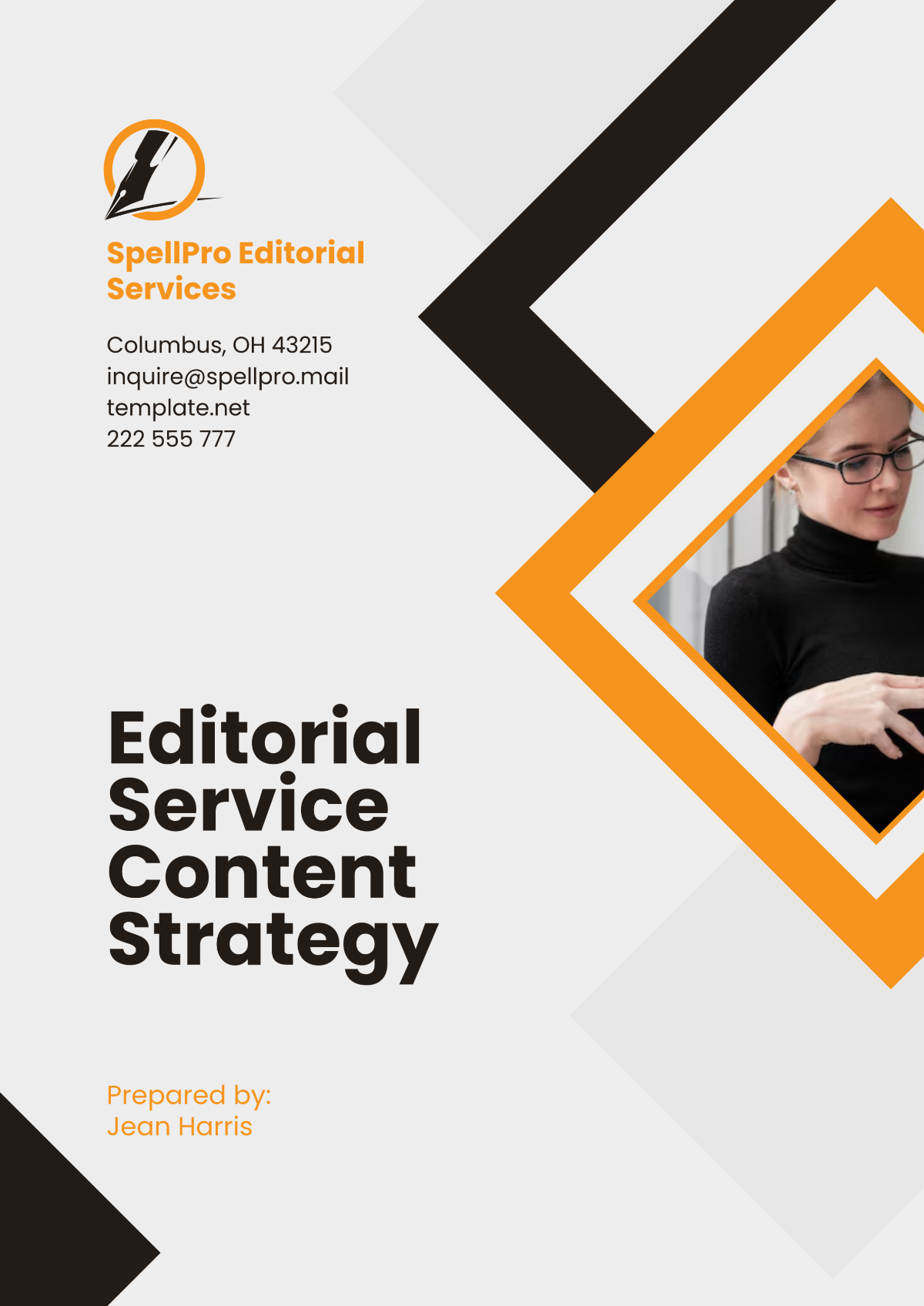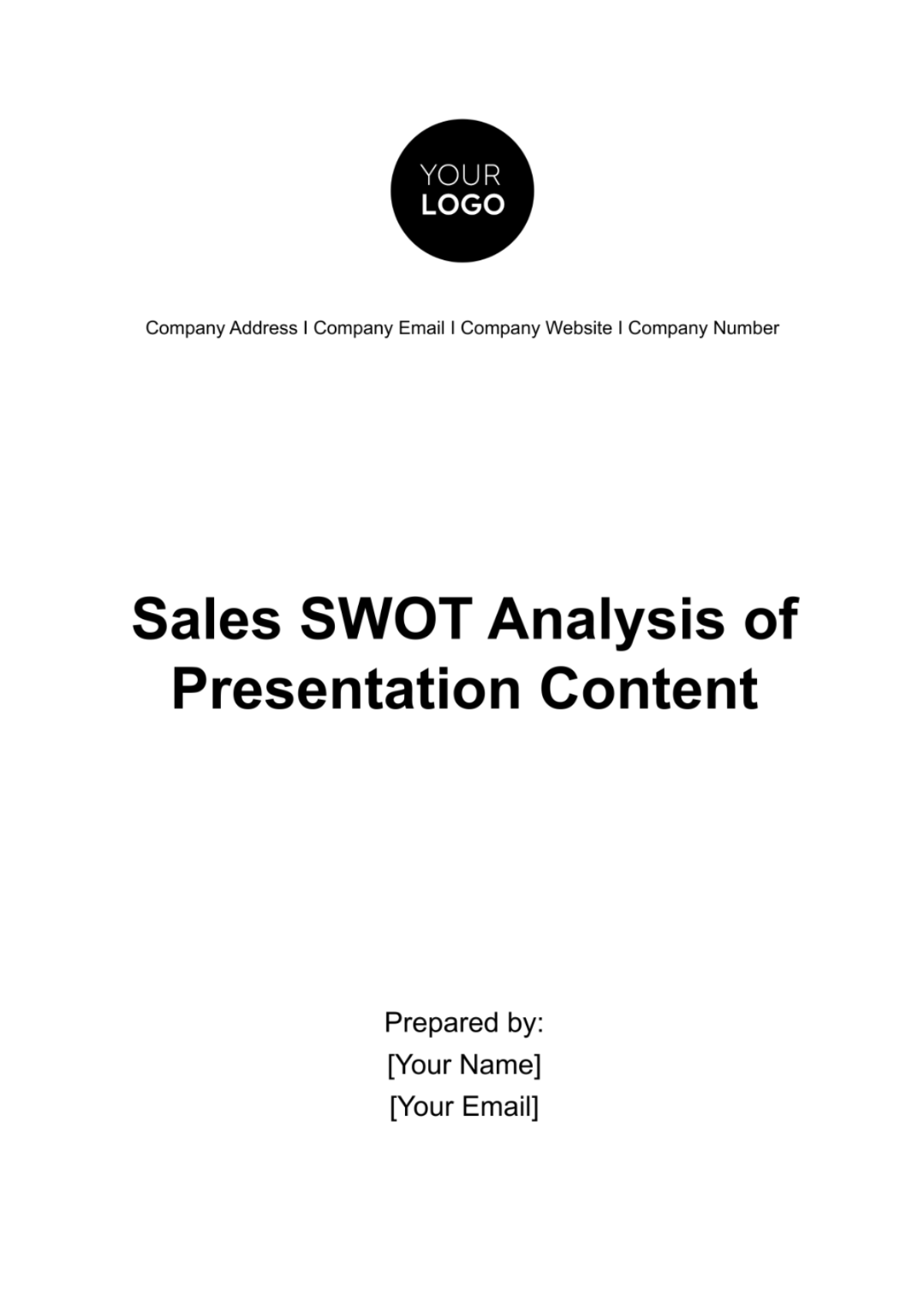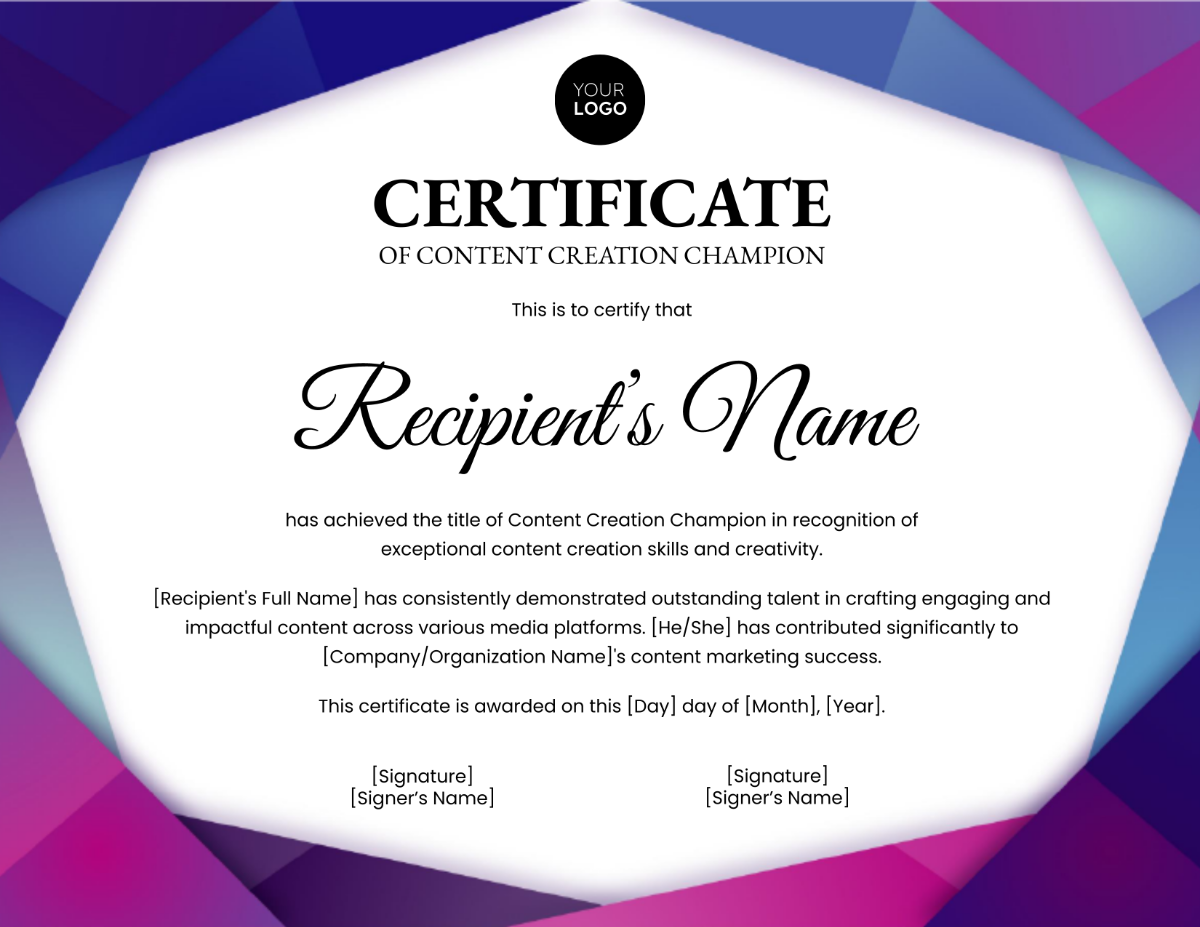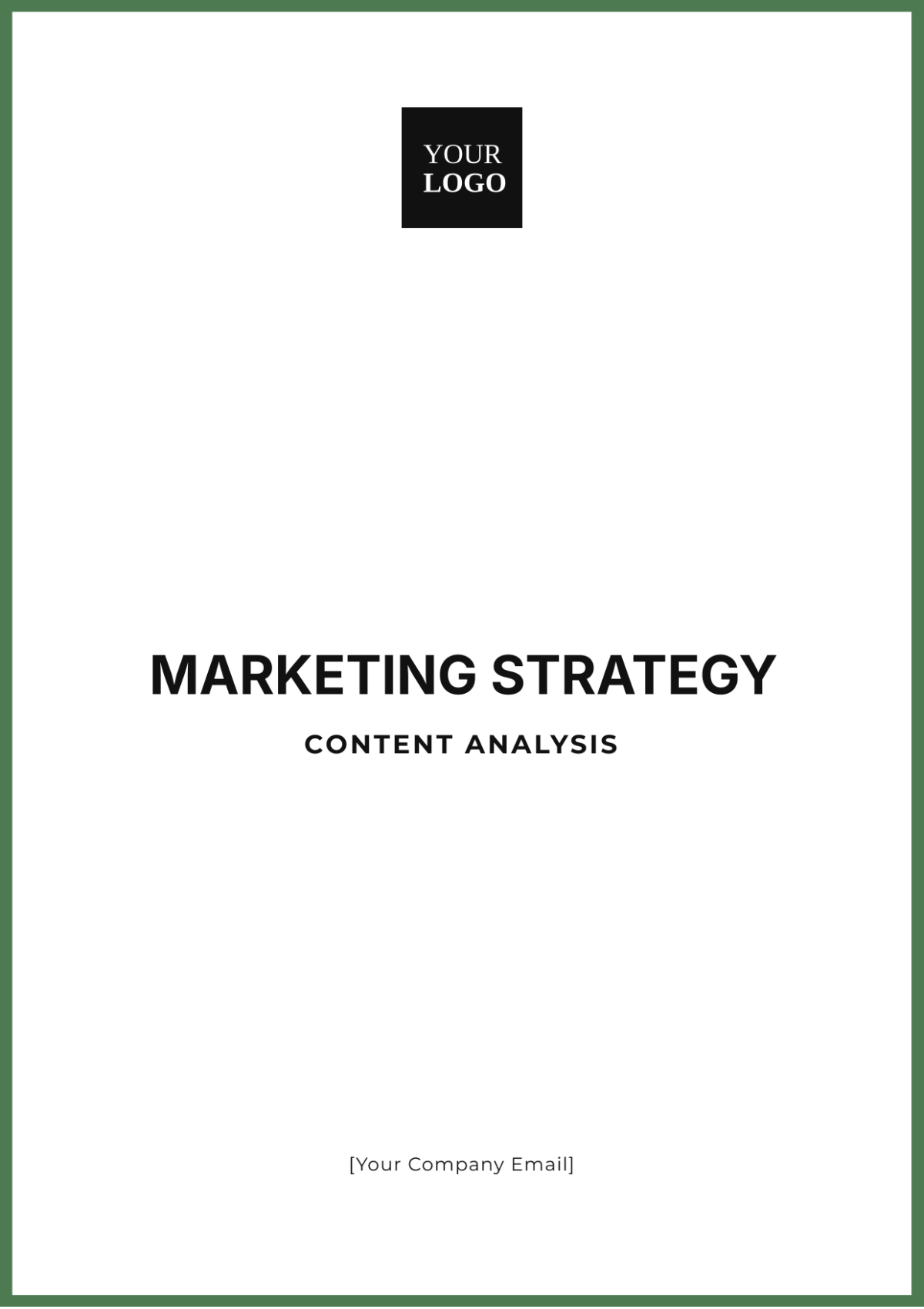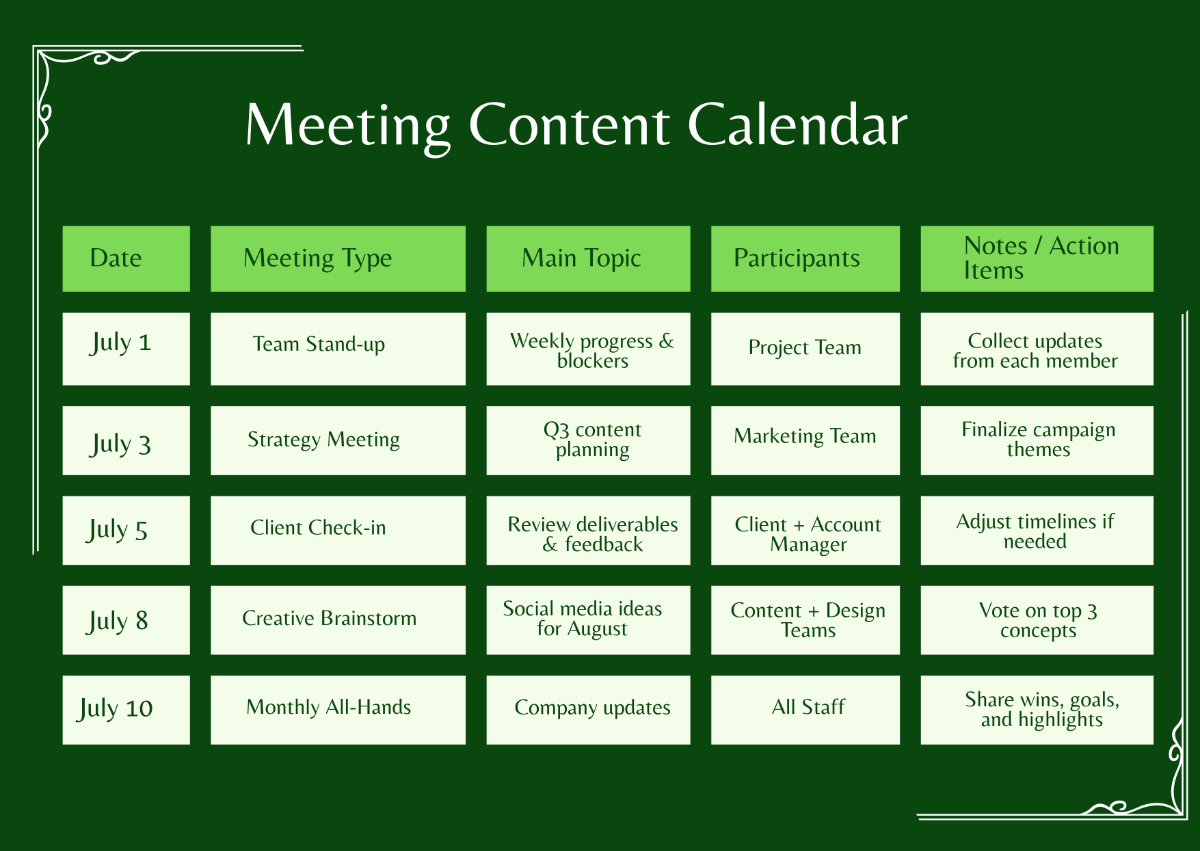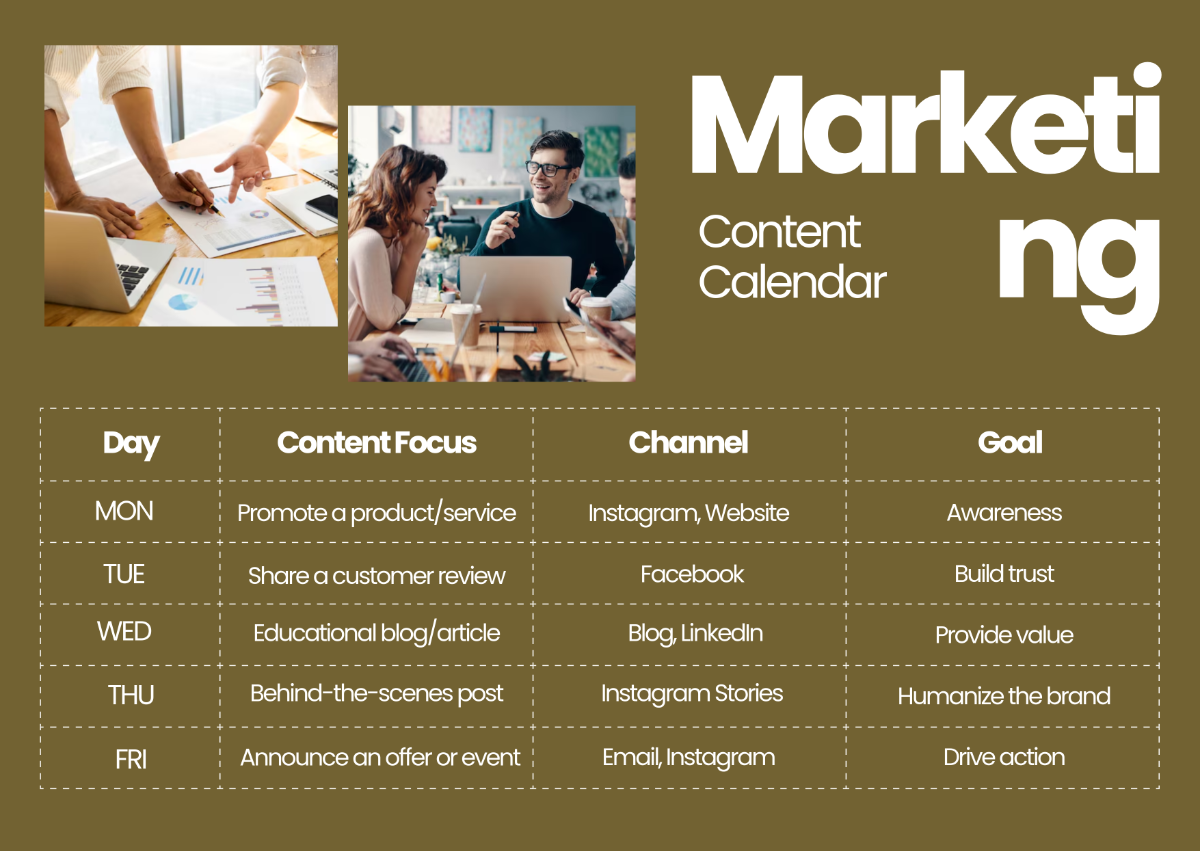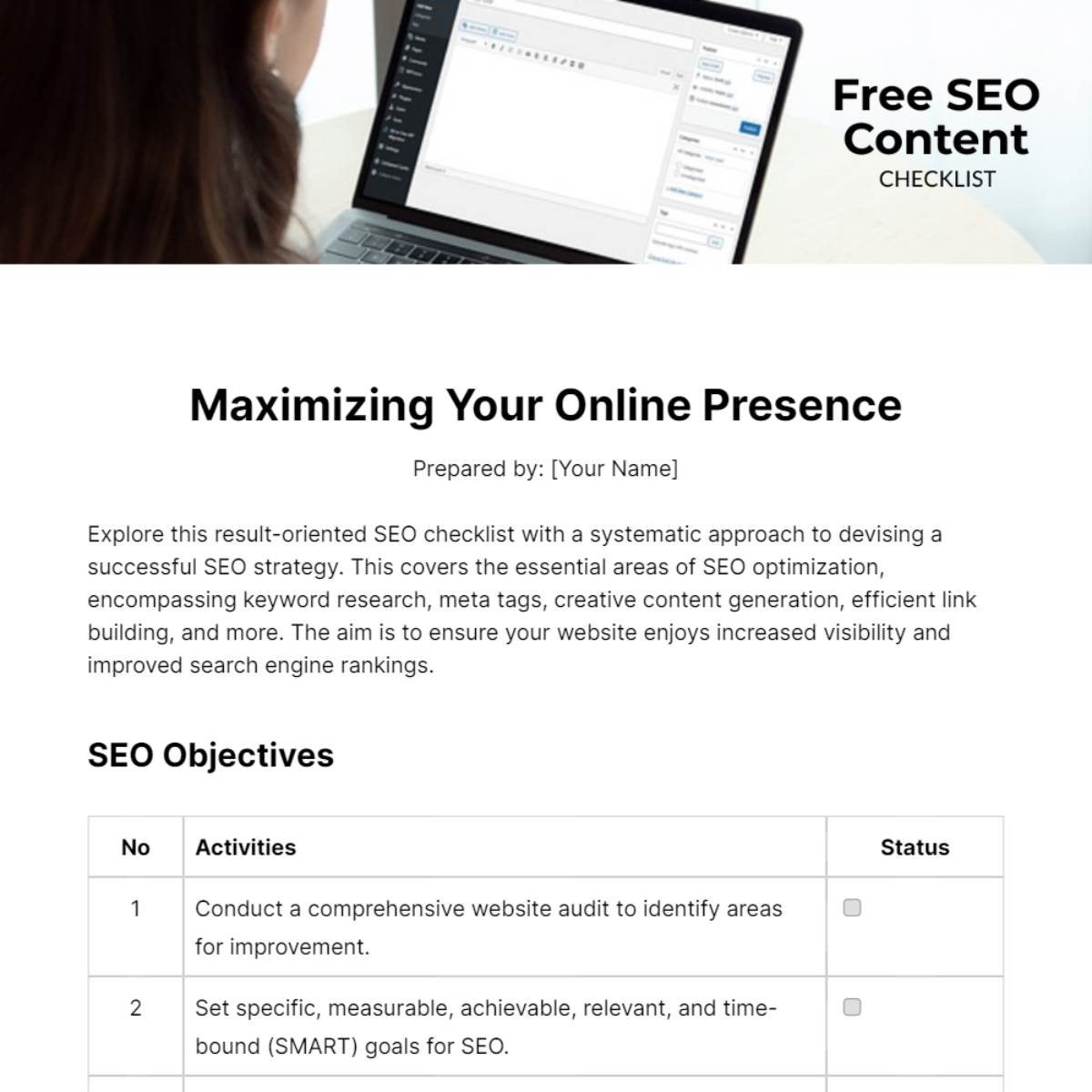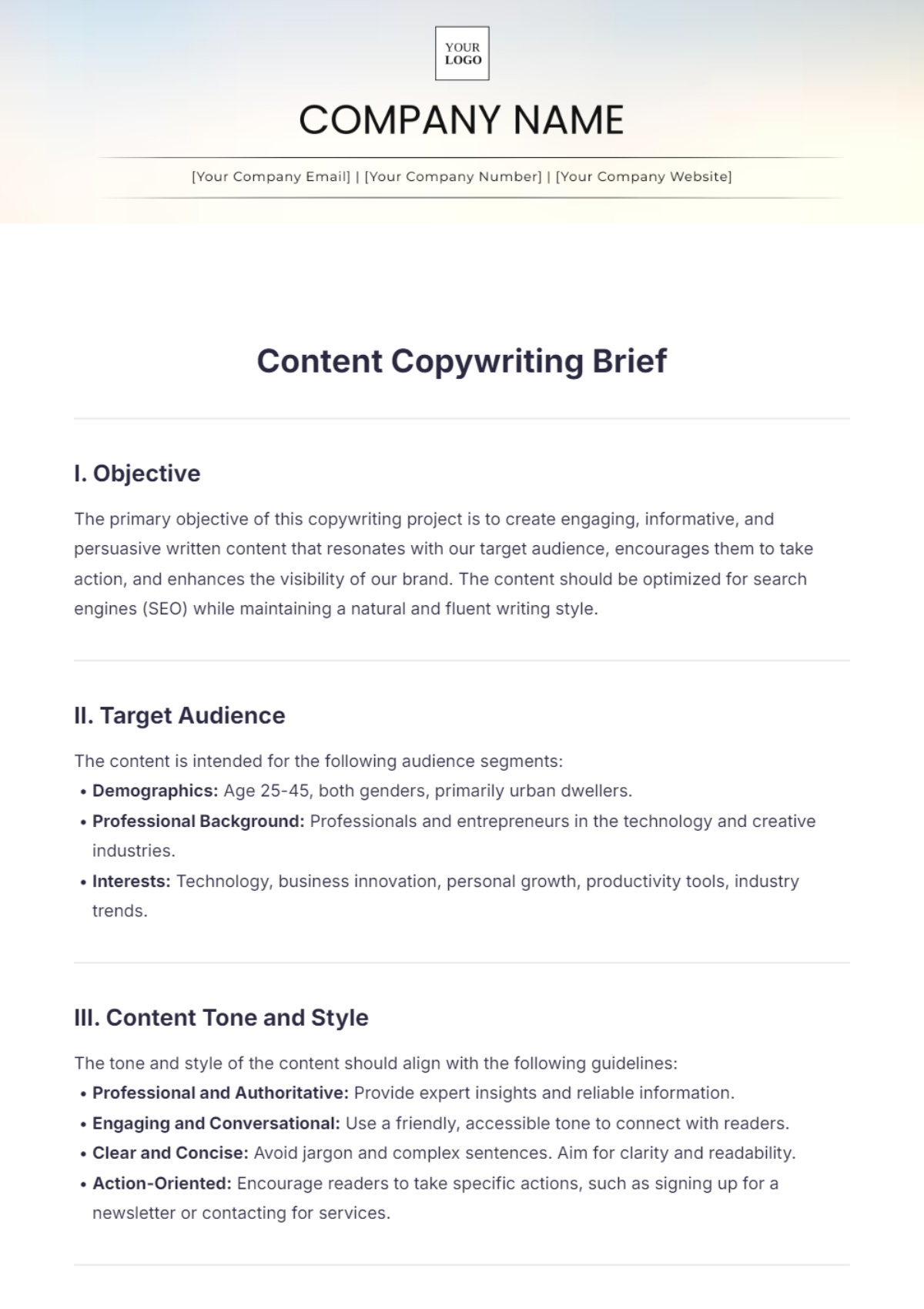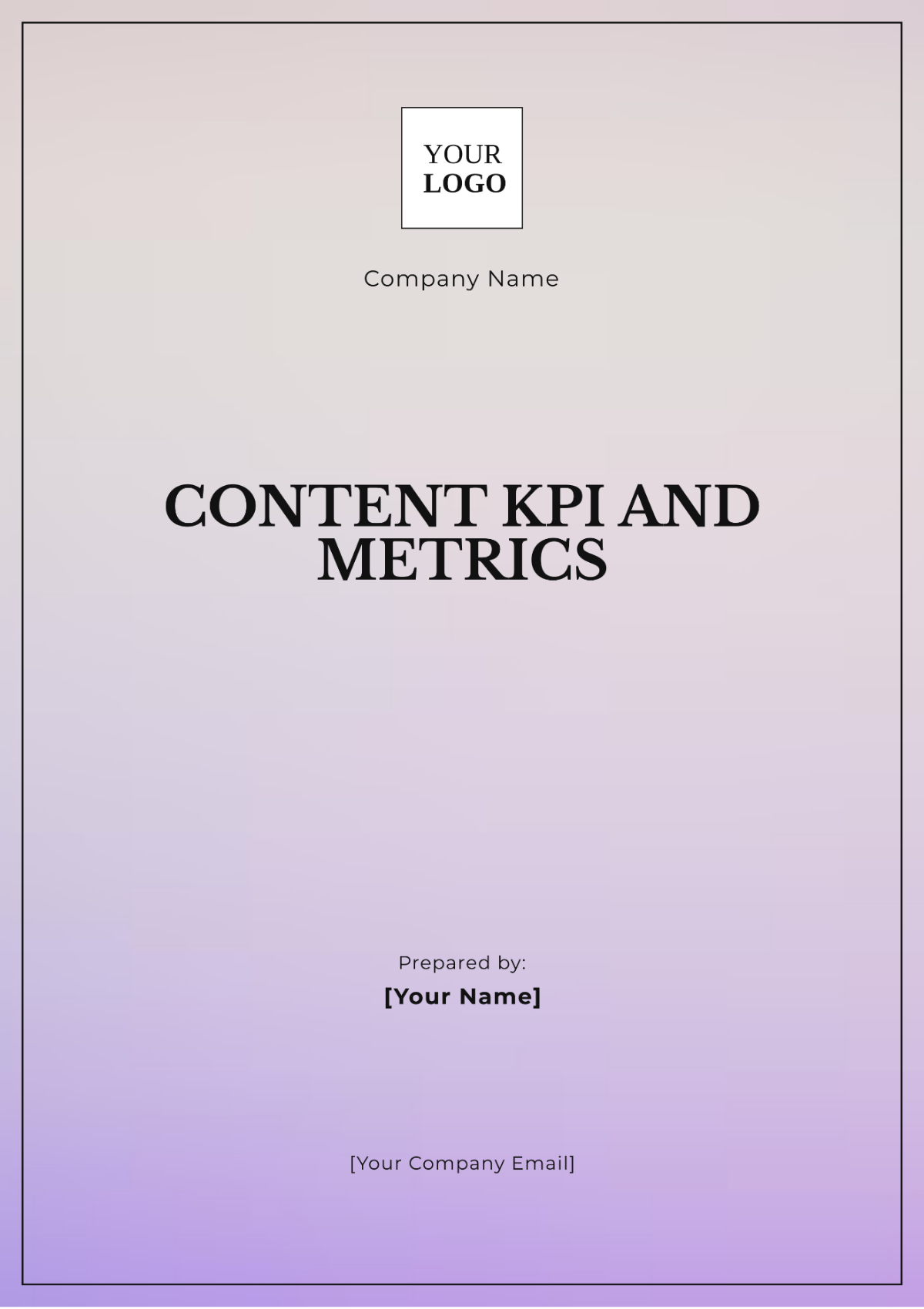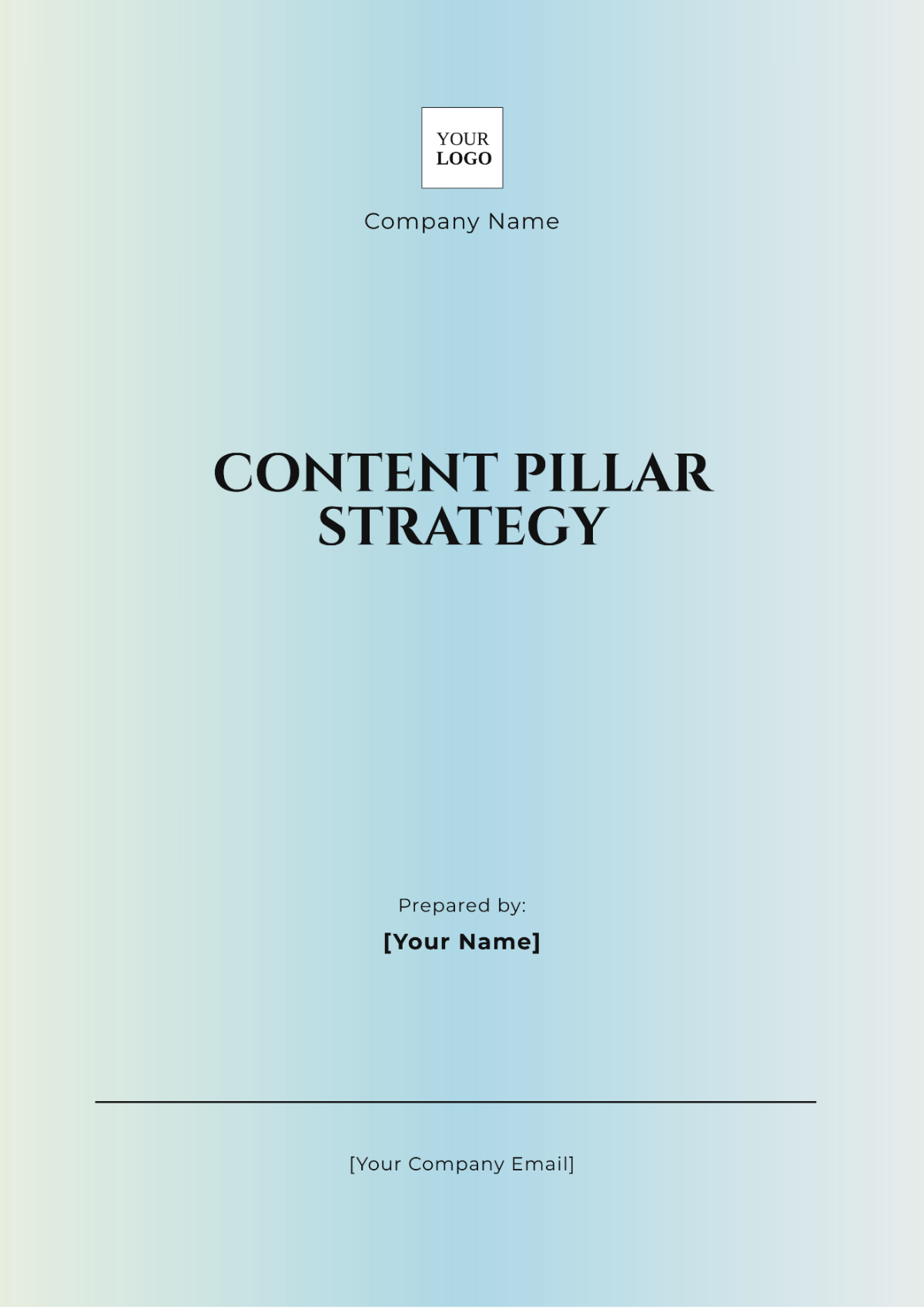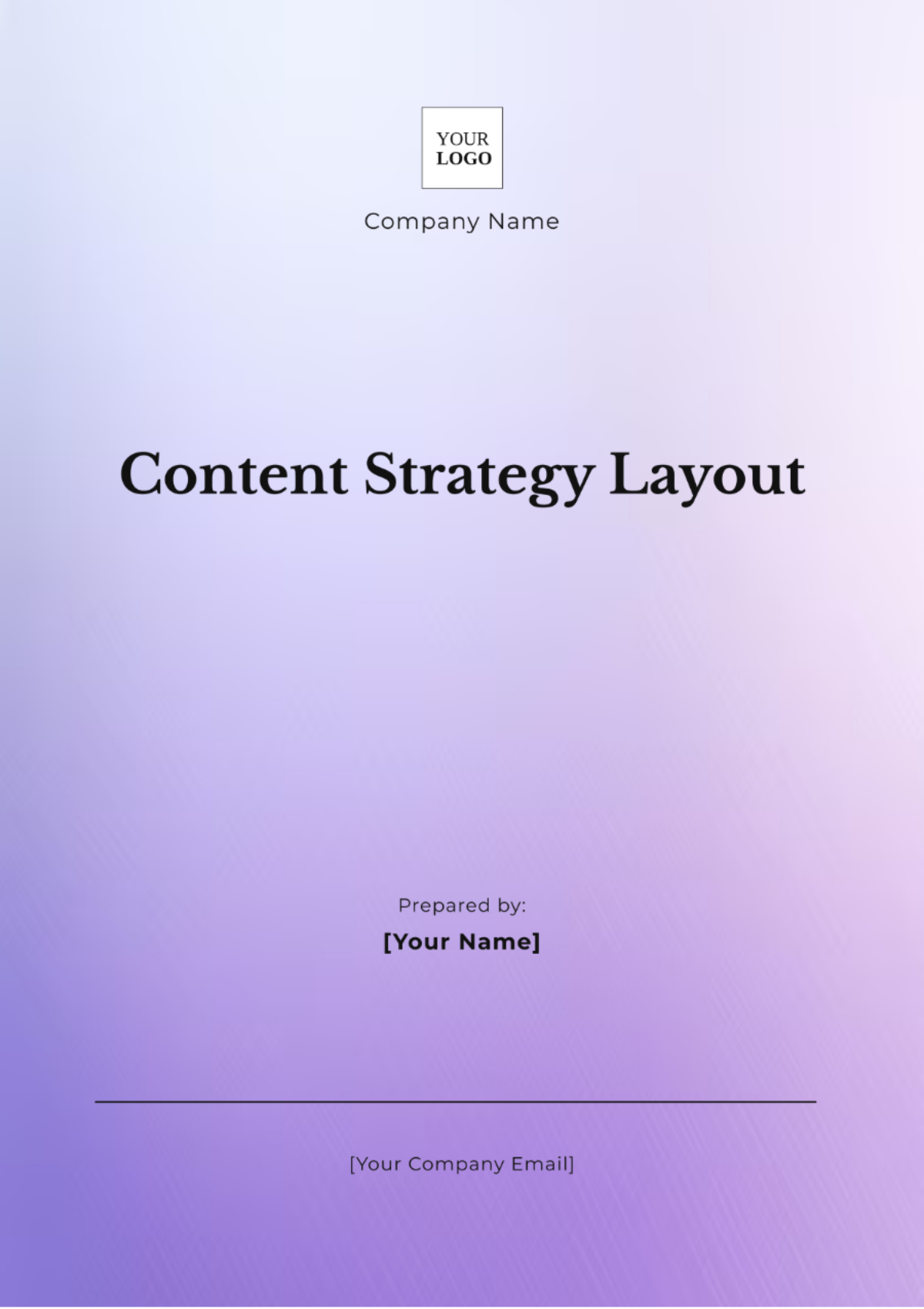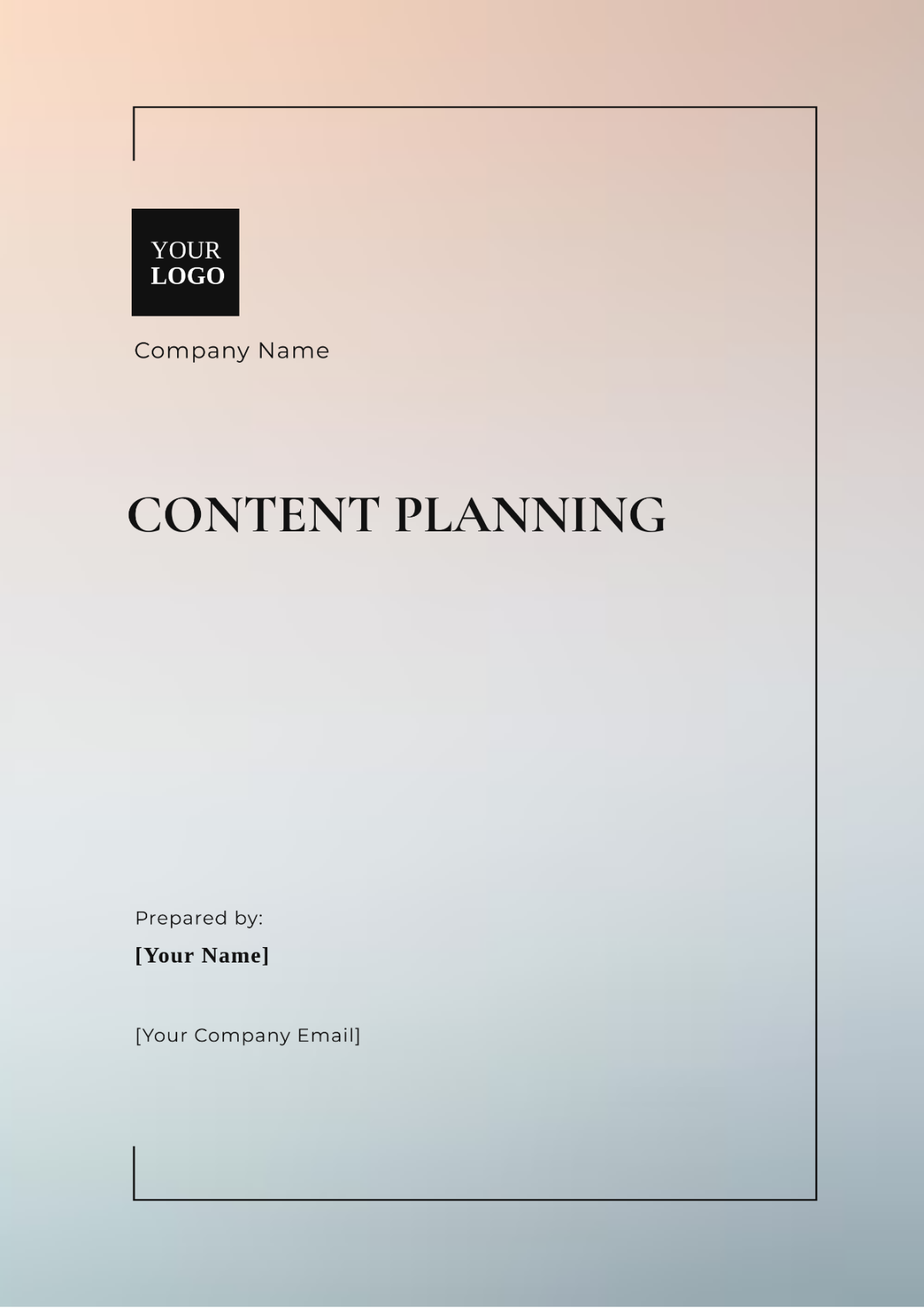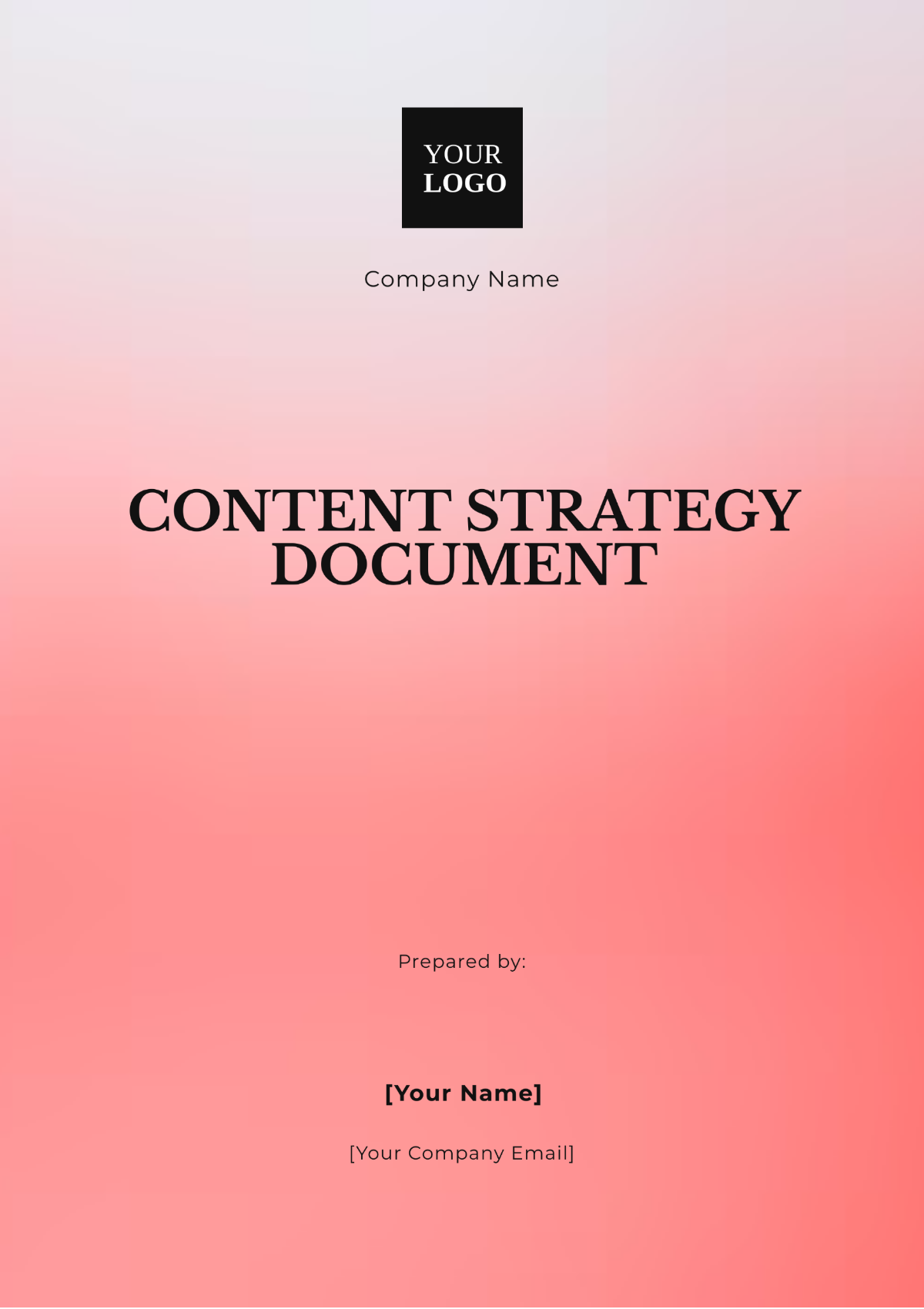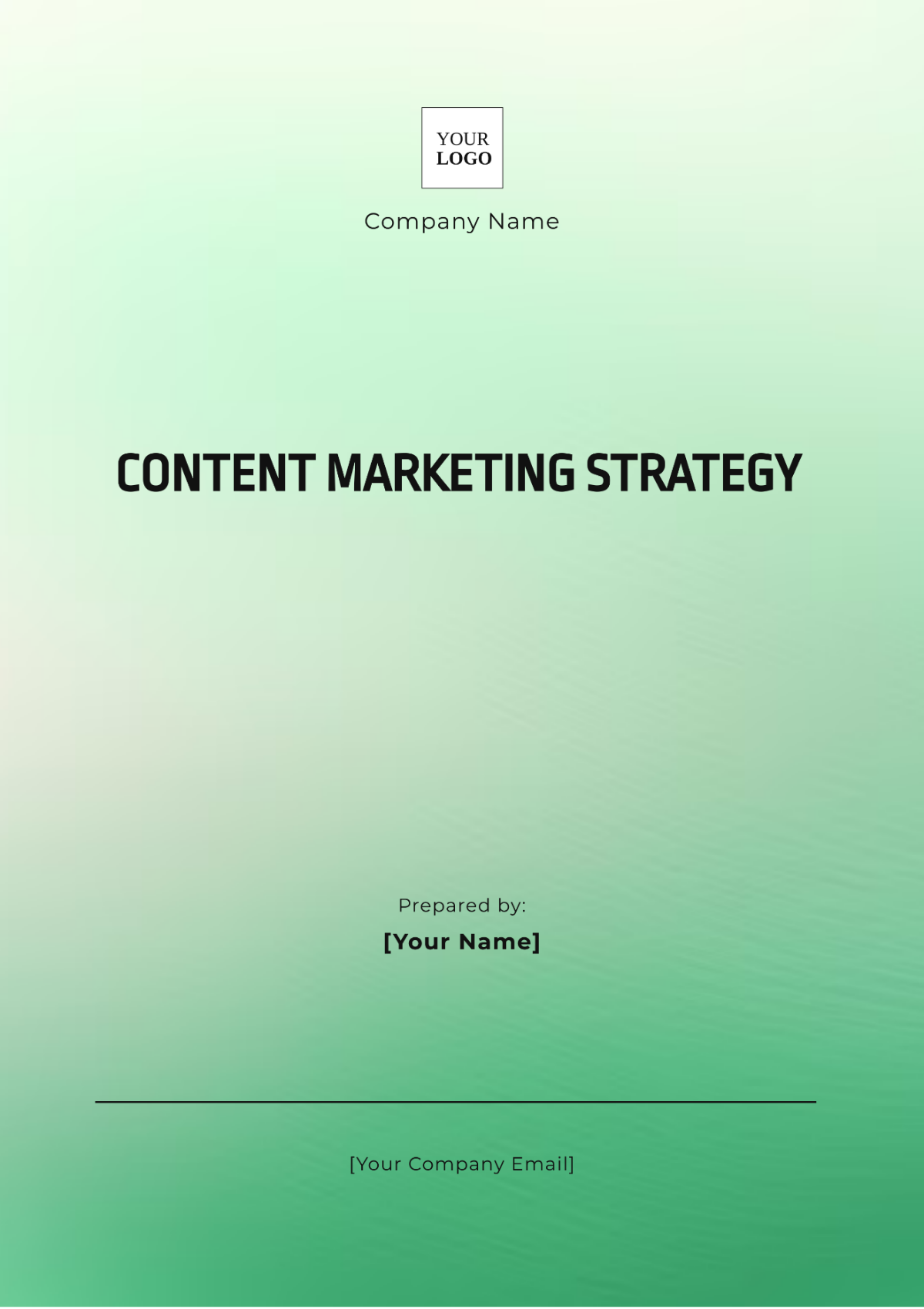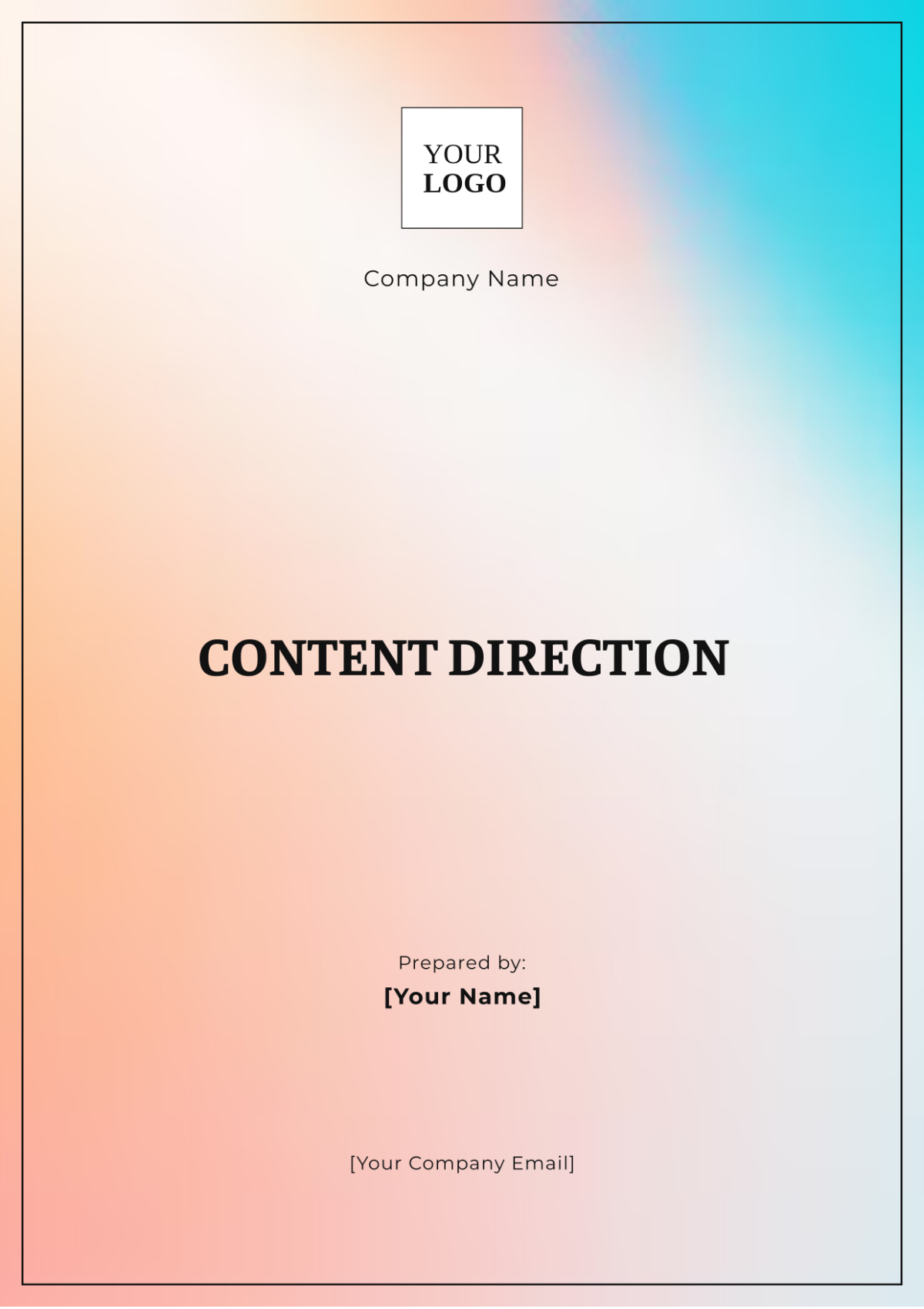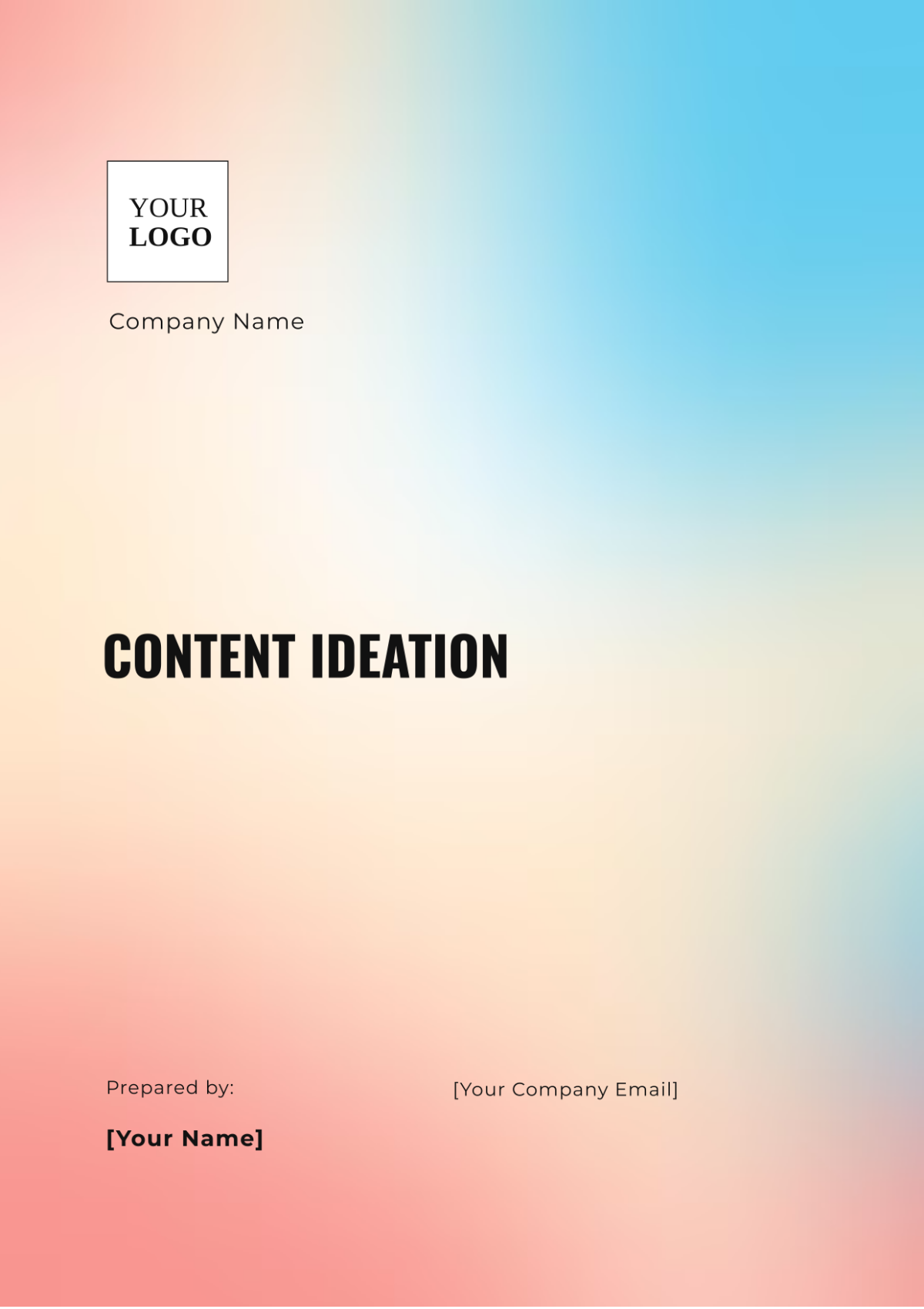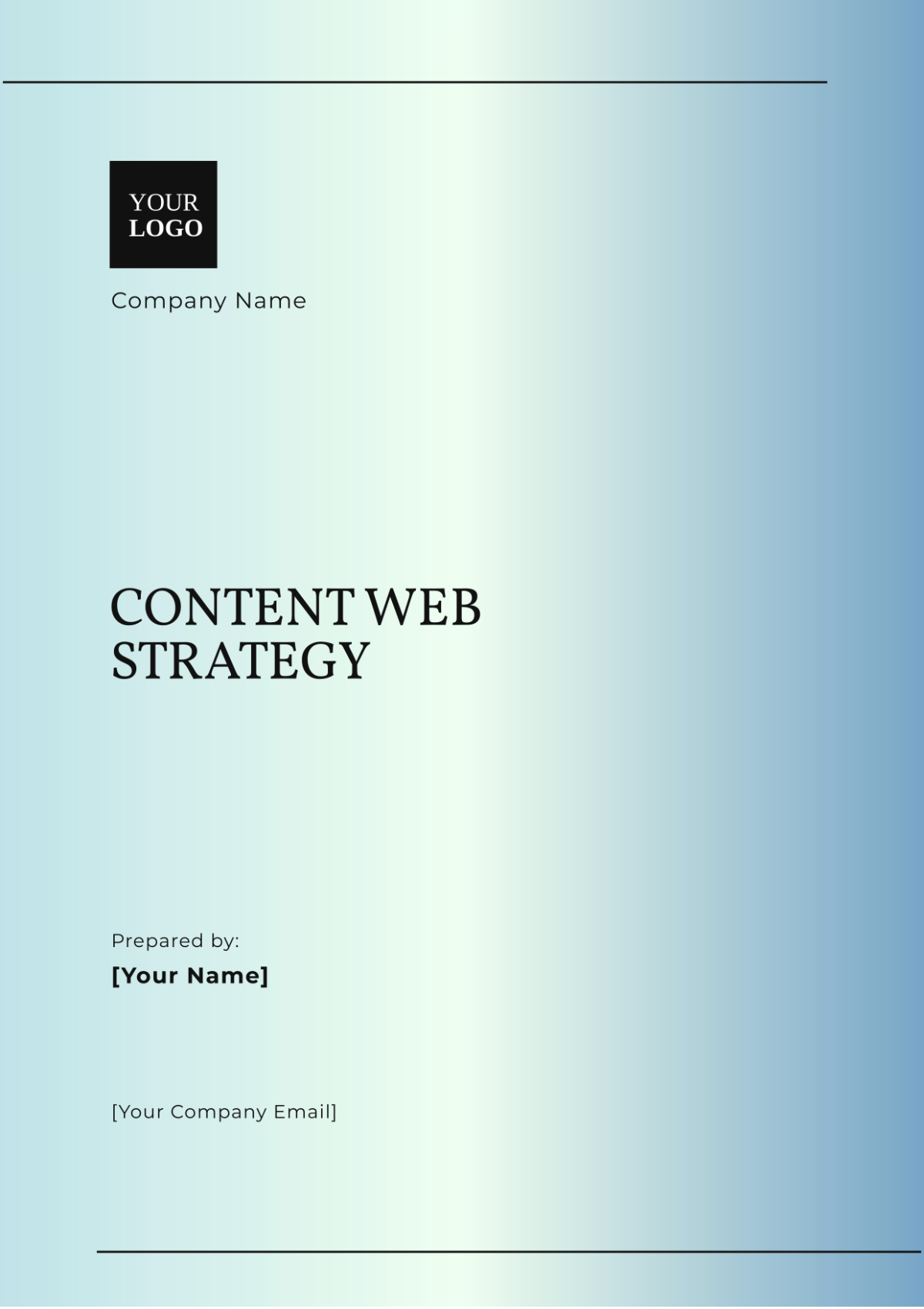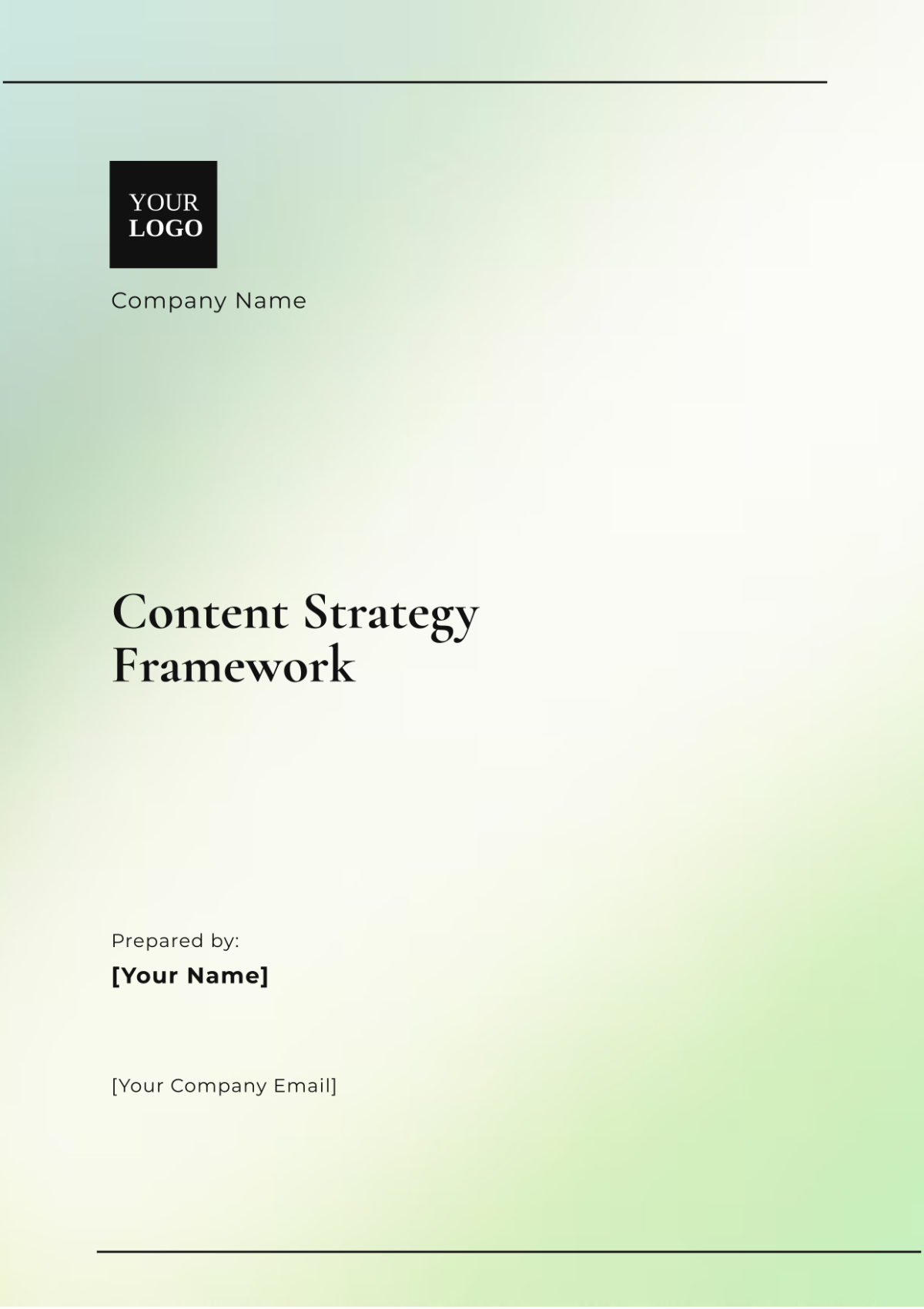Content Management Strategy
Introduction
This Content Management Strategy outlines the plan for creating, managing, and distributing content specifically for marketing campaigns. It ensures alignment with marketing goals, optimizes content creation processes, and engages the target audience effectively.
1. Content Objectives
Objective | Description |
|---|---|
Brand Awareness | Develop content to enhance recognition and visibility of [YOUR COMPANY NAME]. This includes creating engaging and shareable content that introduces the brand to new audiences and reinforces its presence among existing ones. |
Lead Generation | Design content to attract and convert potential customers into leads. This involves crafting compelling calls-to-action (CTAs), lead magnets (such as eBooks or white papers), and targeted landing pages. |
Customer Engagement | Create interactive and relevant content to foster stronger relationships with current and potential customers. This includes engaging social media posts, interactive quizzes, and personalized email content. |
Sales Support | Provide content that assists the sales team in converting leads into customers. This could include sales enablement materials such as case studies, product demos, and sales brochures. |
2. Target Audience
Segment | Description |
|---|---|
Demographics | Characteristics such as age, gender, income level, education, and occupation. This helps in tailoring content to the specific needs and preferences of different demographic groups. |
Geographics | Locations where the target audience resides or operates. This can include specific countries, regions, or cities, allowing for localized content that resonates with regional audiences. |
Psychographics | Insights into the audience's interests, values, lifestyles, and opinions. Understanding psychographics helps create content that aligns with the audience’s motivations and preferences. |
Behavioral Data | Data on audience behaviors such as purchase history, brand interactions, website visits, and content engagement. This information helps in designing targeted content that addresses specific behaviors and needs. |
3. Content Types
Type | Description | Purpose |
|---|---|---|
Blog Posts | Detailed articles on topics relevant to the marketing campaign. These should be SEO-optimized and provide value to readers. | Drive organic traffic, establish thought leadership, and improve SEO. |
Social Media Posts | Short-form content including images, text, and videos for platforms like Twitter, Facebook, and Instagram. | Increase brand visibility, drive engagement, and prompt user interactions. |
Email Newsletters | Regular updates sent to subscribers featuring news, offers, and valuable content. | Nurture leads, maintain customer relationships, and drive repeat business. |
Videos | Engaging visual content for platforms such as YouTube and Instagram. This includes promotional videos, tutorials, and behind-the-scenes footage. | Boost engagement, convey messages effectively, and enhance content shareability. |
Infographics | Visual representations of complex data or information, making it easier to digest and share. | Simplify complex topics, increase content engagement, and enhance shareability. |
4. Content Calendar
Date | Content Type | Topic/Title | Platform | Responsible Person |
|---|---|---|---|---|
January 15, 2050 | Blog Post | "Marketing Trends" | [YOUR COMPANY WEBSITE] | Reyes McManus |
January 22, 2050 | Social Media Post | "New Year, New Goals!" | Patricia Pittman | |
February 5, 2050 | Email Newsletter | "Monthly Updates & Offers" | MailChimp | Jonathan Atkins |
February 15, 2050 | Video | "Behind the Scenes of Our Campaign" | YouTube | Lauren Fields |
March 1, 2050 | Infographic | "2025 Industry Insights" | Matthew Sloan |
5. Content Distribution Channels
Channel | Purpose | Frequency |
|---|---|---|
Website | Serve as the central hub for all content, providing detailed information and resources. | Continuous updates to reflect current campaigns and content. |
Social Media | Platforms for engaging with the audience and promoting content. Includes posts, stories, and ads. | Daily to weekly, depending on the platform and campaign goals. |
Direct communication to subscribers with tailored content and offers. | Monthly newsletters and additional emails as needed. | |
YouTube | Platform for hosting and sharing video content. Provides an opportunity for deeper engagement with visual content. | Monthly uploads or as needed for campaign milestones. |
Blog | Provides in-depth articles and insights related to the marketing campaign. | Bi-weekly or monthly updates to align with campaign goals. |
6. Performance Metrics
Metric | Description | Target |
|---|---|---|
Website Traffic | Measures the number of visits and page views on the company website. Indicates the effectiveness of content in driving traffic. | Increase by 20% per quarter. |
Social Media Engagement | Tracks likes, shares, comments, and interactions with social media posts. Reflects how well the content resonates with the audience. | Increase by 15% per month. |
Email Open Rate | Percentage of recipients who open the email newsletters. Measures the effectiveness of subject lines and timing. | Achieve 25% open rate. |
Video Views | Number of views and engagement metrics for video content. Indicates the reach and impact of video marketing efforts. | Increase by 30% per quarter. |
Lead Conversion Rate | Percentage of leads converted into paying customers. Measures the effectiveness of content in driving conversions. | Achieve 10% conversion rate. |
7. Content Review and Optimization
Activity | Description | Frequency | Responsible Person |
|---|---|---|---|
Content Audits | Regular evaluation of content performance, relevance, and alignment with strategy. Includes assessing engagement metrics and content quality. | Quarterly | James Parker |
SEO Optimization | Continuous improvement of content to enhance search engine visibility. Includes keyword updates and technical SEO adjustments. | Monthly | Abigail Coleman |
Audience Feedback | Collecting and analyzing feedback from audience interactions to refine content strategy. Includes surveys, comments, and direct feedback. | Ongoing | Samantha Scott |
Performance Reporting | Creating detailed reports on content performance metrics to inform future strategies and adjustments. | Monthly | David Harper |
This strategy provides a structured approach to managing content for marketing campaigns, ensuring that all efforts are aligned with the overall objectives and optimized for success.
